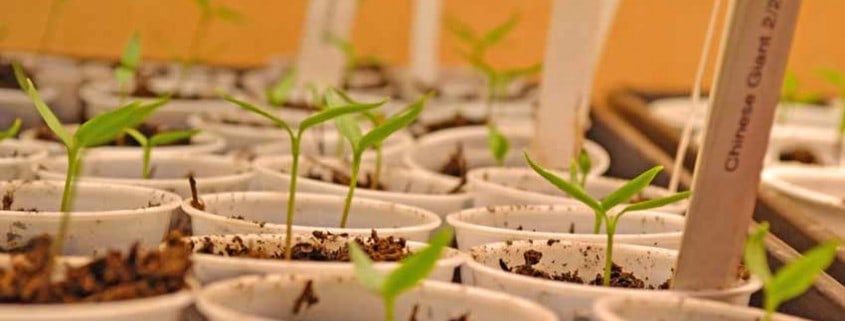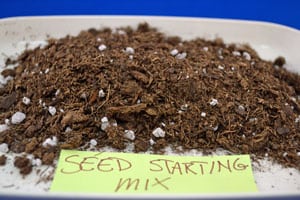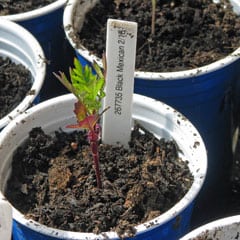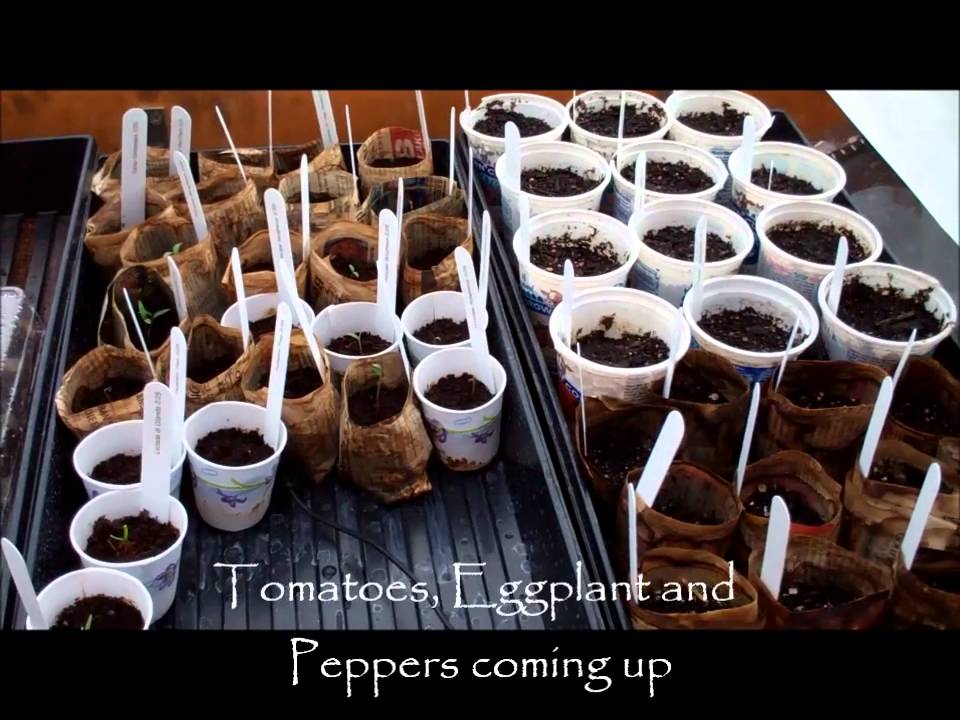Milkweed Seed Germination uses soaking and rinsing of the seeds to remove a naturally occurring chemical from the seed surface for better germination.
Tag Archive for: Seed Starting
When to Direct Sow
Direct sowing can be done almost any time of the year – in early to late spring for the summer garden, mid to late fall for the cool season garden, as well as succession planting a row after a crop has been harvested to grow something else delicious!
Direct sowing simply means planting the seeds directly into the garden soil, instead of starting them inside, nurturing and then transplanting into the garden once they are several weeks old and several inches tall.
If you are in doubt as to when your last frost date is, read Planning and Planting Your Spring Garden.
For more on cool season gardening, read How to Plan for Fall and Winter Gardening.
To discover how succession planting can help you grow more, read Succession Planting – Boosting Garden Production.
Some gardeners think they have no “luck” when it comes to direct sowing certain vegetables, while others are hesitant to try again after past challenges or outright failures. Inexperienced gardeners sometimes think their lack of experience dooms them to failure.
The root causes of most challenges, problems or outright failures can be traced to a shortage of good information, incomplete understanding of seed germination and a lack of patience.
All of these can be overcome, and we’ll show you how!
At its most basic, direct sowing is simply inserting a seed into the garden soil so it can grow. There are factors which affect how successful the results are, but they are easily understood so you can set yourself up for success by using them.
There are three main parts to direct sowing – preparation, sowing and care.
1. Preparation
Amend the soil
Soil or bed preparation sets the stage for the seed and is usually done a couple of weeks to a month before direct sowing. This includes amending the soil with well-aged compost, minerals, fish emulsion, milk and molasses or anything else the soil needs.
“Amending” means to add the nutrients to the soil, then work them in with a garden fork or roto-tiller. If using a roto-tiller, make sure it is set to a shallow depth to avoid disrupting too many of the soil layers and the micro-organisms that live in those layers.
A comprehensive soil analysis can be extremely valuable here, as you’ll know exactly what the soil needs to be at its best. A simpler approach is to add the commonly used nutrients mentioned above and closely observe the plants to see if they are showing a lack of specific nutrients.
Weed the beds
After amending the soil, wait a few days for the first weeds to sprout, then remove them with a small hoe just below the surface of the soil. Weeds thrive in disturbed soil, so you won’t wait long!
When the weeds have just sprouted, they will have released a very potent plant hormonal signal – called auxins – into the soil, signaling all of the other weed seeds to remain dormant. The soil has a tremendous amount of weed seeds in it, just waiting for the right conditions to sprout, and the first weeds up send this signal to keep other weed species from competing with them. This hormone lasts from 4 – 6 weeks, giving you a head-start with little competition for the seeds you want to grow!
Weeds have the most serious effect on garden production during the first week to ten days after sprouting – this is why it is so important to spend more energy and time up front in weeding than it is later in the season.
After your seedlings have sprouted, they add their own particular auxins to the soil, inhibiting other seeds from germinating for another couple of weeks. After the garden crop is a foot tall, weeds have much less affect on their growth and can’t as easily out-compete for water and soil nutrition.
Yet another way is to use a flame weeder to kill the young weeds, while damaging the uppermost, soon to germinate weed seeds in wait. No hoe is used and this method is quite fast.
Layout the bed
Some gardeners prefer to create furrows to sow their seeds in, while others use a garden row marker – two pegs with string attached – to lay out where they will direct sow their seeds.
There are several different approaches, and there is no one “right” way. If you are growing a smaller garden a row marker makes it easier to plant seeds closer together than creating rows. It’s also easier to do succession planting closer together with a row marker, as you plant the seeds along the line of the string without trying to open and then close a furrow and not disturb neighboring seeds or young plants.
2. Sowing the seeds
Direct Sowing
Before direct sowing your seeds, consider how the vegetable will grow and be used. If you will be harvesting the entire crop for young greens, then plant fairly close together, as you want the most production possible. If the plant will be harvested regularly and allowed to mature, like leaf lettuce, spinach, kale or leafy broccoli, then give a little more space for the plant to mature without crowding.
Water the soil the day before planting to make sure it is properly moist to start the germination process.
Read the spacing recommendations on the back of the seed packets as a good starting point. If in doubt, plant two seeds at a time to ensure the best growth, as you can always thin once the seedlings are up. When thinning, never pull the seedlings out as this seriously disturbs the roots of the neighboring seedling – just snip off the unwanted seedling with a pair of small scissors.
One of the more important things in planting any seeds is to be aware of the proper depth to sow them. An excellent rule of thumb is no more then 2 – 3 times their diameter.
Seed orientation is also an overlooked, but equally important thing to be aware of when sowing. The radicle – or part of the seed that was attached to and fed by the plant or fruit – should be planted pointing down, as this is where the root will emerge from. Corn, pumpkin and squash are easy to see – just plant the pointed end down. Smaller or more rounded seeds don’t matter as much, as there is equal distance all around.
After sowing, gently press the seeds into the soil for small seeds, or press the soil on top for larger seeds. This allows for better moisture transfer to the seeds as they start the germination process.
Water the seeds
After sowing, give the seeds a good drink. Make sure the soil is well moistened on the first watering, then wait about 24 – 48 hours to water again, depending on your climate. The most common mistake all gardeners of any experience do is to over-water the garden.
It’s simply a human trait to want to make sure the garden is watered!
Seeds need three things to germinate – moisture, temperature and light once they are up.
The soil moisture needs to be very damp initially, then slowly decreased after the seeds sprout until it is slightly moist. You won’t have much control over the temperature unless you can provide some weather protection such as a plastic row cover or black plastic on the soil a week before planting to warm it up. Light is needed once the seedlings are up, but the sun will take care of that!
3. Care after sowing
After sowing care is pretty simple, but needs to be well-attended during the first month after the seeds start sprouting. Care can be split into three areas – weeding, re-sowing and weather protection.
Weeding
Keeping your emerging seedlings free from weeds when they are young will give them a serious boost, as young weeds can effortlessly out-compete your vegetables for needed nutrients and water. This severely limits their future growth, strength and production.
Removing young weeds is very easy, especially if using a sharp, thin hoe to slice them just under the surface of the soil. If you’ve allowed the initial crop to sprout and then removed them, you should have less weed pressure to worry about, but still keep on top of them!
Make sure to distinguish between the weeds and what you planted. If in doubt, wait a few days to see the shape of the leaves and how it matches (or doesn’t) the seedlings where you planted.
Re-sowing
Due to the variabilities of weather outside, some of the seeds may not germinate, or do so very slowly. This may require some re-sowing in the thin spots to make up, but is easy and usually only needs doing once.
Keep a sharp eye on your young seedling crop, as they are absolutely tasty for wild critters – birds, mice and squirrels all love to munch on young, tender seedlings. If you see chewed or “disappeared” seedlings, look very closely to see if you can determine what ate them and take appropriate action – excluding them with netting or row cover or groundcloth, then re-sow.
Weather protection
You don’t have as much control the temperature and humidity of the garden, but you can moderate some of the temperature swings – all season long.
For cooler weather such as spring or later fall, row cover is a lightweight plastic sheeting which is easily spread over the seed bed, capturing some of the warmth from the sun and soil and raising the temperature for the seeds just a bit. As the seedlings grow, a small hoop house can be made from bent wire or 1/2 inch pvc pipe inserted into pvc elbows, creating a square hoop to support the row cover plastic.
Cooling in warmer weather can be done with shade cloth and the frames mentioned just above. Leave the ends open with shade cloth to allow for air circulation and so pollinators can get in.
Why Test Your Seeds
Do you have some old packets of seed around, with doubts about the viability; or have you saved seed for a few years and wonder if they will still sprout?
Do you know if those seeds will grow?
Have you ever wished for a way to make sure?
We will show you how to know for certain whether that older packet of seed is still good, or how long you can keep those tomato seeds around before needing to pitch them.
There is a way, it is easy and simple to do. It’s called a seed germination test and you probably have all of the supplies needed in your kitchen.
Here’s How to Do It
You will need these 3 things, plus the seeds you want to test for germination –
- Paper towel
- Spray bottle of water
- Ziploc type plastic bag
The first – and most important – step is to thoroughly wet the paper towel. This is the first and easiest step, but most mistakes are made right here, leading to poor germination. Smaller seeds don’t need as much water for germination, but larger seeds do. The extra moisture will create a humid environment in the plastic bag, helping the germination process.
The dry towel is on the left, with the properly wetted towel on the right side. You should be able to see through the towel to the surface underneath – then it’s wet enough. If it’s drippy when you pick it up, it’s wet enough. If you wet the towel like on the middle left side – damp but not wet – there’s not enough moisture for the seed to absorb and begin the germination process.
If you want to learn more about what happens during a seed’s germination, read Starting Seeds at Home – a Deeper Look!
Next, after the paper towel is thoroughly wet, fold it in half. You can see just how wet the towel is by the amount of water left on the board after folding it over.
Open the towel back up, leaving a fold to mark the center of the towel.
Third, place the seeds along the fold, leaving room for them to sprout so they don’t become tangled up.
If you are doing a germination test use enough seeds to make the math easier, such as 10, 20 or 25 seeds. When we are doing a germination test, we follow established testing guidelines, but as a home gardener a smaller amount will verify if your seeds are viable and can sprout.
Re-fold the paper towel, enclosing the seeds.
Roll the paper towel up….
…and place it inside the Ziploc bag. There should be a good amount of moisture in the bag to start the germination process, so if you don’t see moisture droplets inside after a few minutes, open the bag and give it a squirt of water.
Finally, place the bag in a consistently warm place – like the top of the refrigerator or in a warm window. Most vegetable seeds do not need light to germinate, so a darker place is fine to begin with.
Check every couple of days for moisture levels and the start of germination. If the moisture levels drop significantly – this is a good sign the seeds are absorbing the water and beginning to sprout. Add a spritz or squirt of water as needed, usually only once or twice a week.
Once the majority of seeds have sprouted, open the paper towel up, count them and do the math to get a percentage. For instance, if you started with 10 seeds and 7 sprouted, you have roughly a 70% germination rate. If 20 out of 25 seeds sprouted, there is about an 80% germination rate.
Other Seed Germination Tests
This is what one of the germination tests we do looks like – pretty good! These seeds are viable with a better than 90% germination rate.
For smaller seeds, we will often divide the germination chamber into half or quarters to make the process more efficient. Some seedlings will mold faster than others, this is why you monitor the progress closely if you are pre-sprouting for transplanting.
The “Paper Towel Method” is almost universally used. Here are the results from a germination test at Seed Saver’s Exchange. Note the labeling of variety of seed and date the test was started. If you are keeping track of your germination percentages, like we do, it is important to keep clear notes and details!
Please Note: Depending on the type of seed you are testing, you may see very different results and they may take more time than the average vegetable seed.
For instance, herbs and flowers usually take much longer – sometimes weeks – to germinate, and can have lower germination rates. This is normal and not something to be concerned with.
Next Step:
Learn more – Seed to Seed Book is our go-to reference for all things seed related, including germination times, needs and regional recommendations.
Seed germination is affected by several factors – moisture, temperature, light, soil or seed starting media, time, observation and last but not least patience. We have covered most of these elements in “Starting Seeds at Home – a Deeper Look”, “Seed Starting Media for the Home Gardener” and “Are Seed Starting Mixes Worth Your Money?” What we haven’t covered are time, observation and patience.
Recently we wrote an article on seed starting mixes, linked above, and did a small experiment to see how they compared to each other in germination of a single seed of the same variety in the same conditions. What we learned is interesting, but also taught us some things we want to share with you.
Two of the seed starting mixes had very good seed germination in about the same amount of time, while one did not. At the same time, a different variety of seed was planted in an adjoining tray with the same temperatures and very similar moisture and the seed germination was very good and consistent, yet was the same seed starting media that did poorly in the single seed test.
This is where time, observation and patience enter into our story.
Seeds need the exact right conditions to germinate. If one or two of the conditions are right, but another is not, the seed will simply remain dormant or in worst case start to decompose. It is only when every condition is right the seed germination occurs.
We gardeners make the mistake of thinking only we can provide those perfect conditions with our heated pads and thermostats, moisture probes, soil thermometers and lights. We forget the seeds left in the garden, untended and unmonitored which germinate in their own time, when the conditions are just right. The same goes for the seeds in the forest, in the ditch by the side of the road or anywhere we aren’t planting them.
This is the initial test – three sets of seed starting mixes with two cups of each mix. We planted the Crystal Apple cucumber as the test seed, since cucumbers have a good strong seed germination and we know the germination percentage as we had just finished doing seed germination tests on the new seed stock.
After 14 days, this is what the test looks like. The six seed starting cups have been in the same tray with the same heat from a heat mat underneath and with the same amount of water, as they were watered from the bottom by adding water to the tray.
The Jiffy mix has the tallest seedling, followed by the Black Gold and the Miracle-Gro cups only having one seed just starting to peek itself out.
A closer look at the Miracle-Gro cups with the tiny little yellow spot being the seedling just starting to peek out. There is no indication of seed germination from the other cup.
There is also no sign of mold or fungus that might be inhibiting the seed germination, either.
The Black Gold cups have really good seed germination in one cup, with a much delayed seedling in the other. Both look strong and healthy, with the two yellow spots on the smaller seedling in the background from where the seed was holding on after sprouting and emergence.
The soil looks good in this set as well, no mold or fungal issues.
The Jiffy seed starting mix was the clear winner in this test, with both seedlings coming up within a day of each other and both growing strong and at about the same rate. Both have started putting on their first true leaf with the one in the background being just a little bigger.
What we found really interesting was Jiffy was the hardest seed starting mix to work with, being very water repellent, very light and fluffy. It was difficult to get into the cups without spilling it and Cindy had to really water it and work the water in for the first couple of times to get the media moist before planting the seed. The water would pool up and run over the lip of the cup, without any getting into the media. She had to dump the excess water out, add a little bit and carefully mix it in with a small tool to get the media to start to absorb the water. It took a few times of this to get the initial wetting done and after that there were no more problems.
This soil looks really good as well with no mold or fungal issues.
The seedling tray next to the six pot test tray looks like this – it’s a test planting of another new Oaxacan chile we hope to bring to market and this is the grow-out test planting. All of these seeds are planted in Miracle-Gro and as you can see, they are doing well. The seed germination has been good and at an even rate, with almost all of the cups having a seedling at almost exactly the same stage.
If we hadn’t observed the difference in seed germination rates between the two flats, we could easily conclude the Miracle-Gro is a poor choice for starting seeds in. However, the chile seedling tray disproves that.
Cindy had almost given up on seeing any seed germination from the Miracle-Gro in the cucumber seed test, but then three days later the first seedling peeked out.
This is the lesson of patience; so many times we’ve gotten calls or emails from semi-panicked or frustrated gardeners saying their (our) seed hasn’t come up yet. Most of the time, the needed seed germination period hasn’t elapsed yet, so we ask them to wait until the normal germination time has passed, then let us know. Almost without fail, we hear back in a couple of days the seeds have sprouted.
Please realize, just because we had these results with our very small and informal test doesn’t mean you will get the same results. Seed starting mixes and potting soils are formulated differently in different regions across the country, and those ingredients often change from one supplier to the next, depending on the time of year and availability. It is well worth doing a similar test of your own to see what works best for you in your location. Buy a few different bags of seed starting mix and potting soil to see if you have different seed germination rates, then you’ll have a better understanding on how this part affects sprouting.
Now you’ve seen our experiments and experiences, what are yours? Have you had a similar situation turn out completely different than you expected it to?
Potting soils come in all shapes and sizes, with most touting some form of “Organic & Natural” on the bag – but are they really certified organic? Do those potting soils really work as advertised and contain healthy, wholesome ingredients to help your precious seedlings get that critical head start they need?
To answer these questions and more, we bought a few bags of potting soils from our local sources, brought them home and opened them up to take a close look at what is there. We looked at the bag and labeling, seeing what is being sold and why, what wording and marketing is being used and if they stood up to closer scrutiny. One of those potting soils we have used for a few years, so we let you know of our past experiences.
Please note – this article is in no way meant to be a comprehensive, exhaustive laboratory research and review of all potting soils available to the average home gardener. There’s just no way for us to do that, as many are only regionally available and the ingredients change from region to region in the bigger brands.
As with our seed starting mixes article, we suspect there are a few companies producing potting soils for different markets with unique branding and bagging for each channel. We saw this with one product – one bag design and color set for the big box stores and another one for the smaller independent garden centers. This only underscores the need to read the labels, know what the descriptions, ingredients and marketing-speak mean and be able to decide for yourself if that particular bag will work for you and is worth the cost.
As with our seed starting mixes analysis, we found confusing and sometimes misleading labeling.
What are potting soils and do I need to use one?
Potting soils are traditionally what seedlings are transplanted into from the seed starting mixes. The seed is germinated in the seed starting mix, then when it is 3 – 4 inches tall and starting to put on its second or third set of true leaves, it is transplanted into a potting soil. Potting soils have nutrients which are missing in the seed starting mixes, continuing the growth of the seedling by feeding and supporting the root structure it is starting to develop.
What goes into potting soils varies widely, from a basic seed starting mix with some aged compost added for plant nutrition to full custom blends with compost, soil and nutrients coming from different ingredients – all to supposedly help the seedling grow stronger and faster.
Not everyone needs potting soils, as some have the space and materials availability to create an excellent rich, aged compost to use as the starting point of mixing their own special blend, while others just don’t have the time, space or materials available to do that.
Let’s take a look!
The first of the potting soils we found was the Kellogg Amend Organic Plus at Lowe’s and it’s available at Home Depot as well, so it should be available in most big box stores in the western US. We were interested to see what was in the bag and do some testing, as we’ve had several of our customers email us in alarm after transplanting into the Amend potting soils and within a few hours the seedlings were almost all dead or severely wilted. We found a commonality with most of them using the Kellogg Amend potting soils, but haven’t heard anything negative in the past couple of years.
As we mentioned in our seed starting mix article, we are not impressed with the words “Organic” or “Natural” on bags of soil, so seeing “Organic Plus” prominently splashed across the bag was an alert for us. It is branded as a garden soil for flowers and vegetables.
One label that did catch our eye and add to the intrigue was the OMRI listing on the bottom left of the bag. This indicates the contents are certified for organic food production, and are the equivalent of a “Certified Organic” label on food.
The OMRI label piqued our curiosity because our previous research as to why the Amend potting soils were killing seedlings led us to the fact that Kellogg had been using bio-solids, or treated municipal sewage, and possibly industrial runoff or wastewater. This easily explained why the seedlings died when transplanted into the potting soil.
So the question was – is this the same potting/garden soil, and if so, how is it OMRI listed?
In doing some reading, it appears Kellogg has used bio-solids or treated municipal sewage as a major ingredient in its composting program for a number of years. It seems that their OMRI listed products do not have any bio-solids as an ingredient in their products, but you can’t tell from the label.
In looking at the OMRI listing for Kellogg Amend garden soil, we found it is listed but with restrictions. OMRI lists it in the category of “Fertilizers, Blended with micronutrients” with the restriction being –
May be used only in cases where soil or plant nutrient deficiency for the synthetic micronutrients being applied is documented by soil or tissue testing.
Kellogg’s Amend product page has this to say about their OMRI listing –
Proven Organic
All of our products are listed by the Organic Materials Review Institute (OMRI), the leading non-profit, internationally recognized third party accredited by the USDA’s National Organic Program (NOP). That means every ingredient and every process that goes into making our products has been verified 100% compliant as organic, all the way to the original source. Look for the OMRI logo on the bag, ensuring every product is proven organic.
All in all, it is OMRI listed – even with the discrepancies between Kellogg’s product information and the OMRI listing itself with the restrictions.
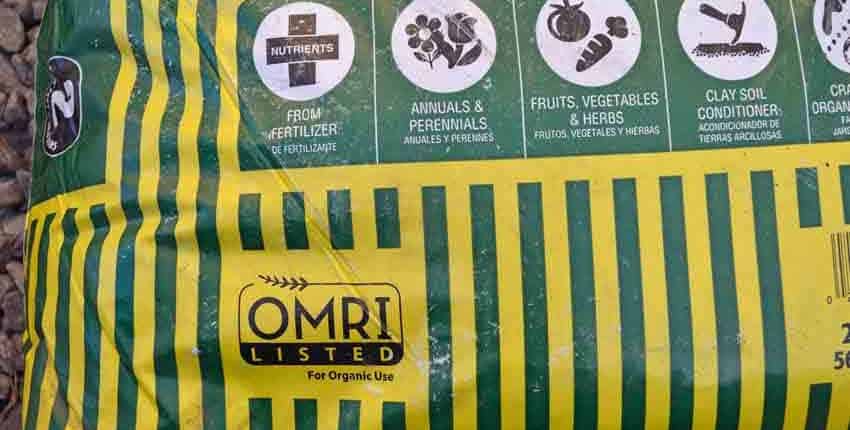
The OMRI listing is displayed in the lower left part of the bag, underneath the info box of what it is supposedly derived from and what it is good to use it for.
The ingredients list compost as the primary ingredient with what makes up the compost. Recycled forest products are typically a blend of finely ground wood from leftovers of the timber industry. Arbor fines are finely ground tree trimmings. Hydrolyzed feather meal is crushed and boiled poultry feathers, used as a source of nitrogen.
Dairy and poultry manure sound fine, until the source is looked at a little closer. What is the source of the dairy and the poultry manure? There is reasonable concern as to what is contained in the manure of animals from confined feeding operations – there are antibiotics and hormones used in the day to day operations which are passed through in their manure. Another concern is the possible presence of industrial herbicides and pesticides used in conventional grain production, which can easily be passed into the manure.
These are things to think about, especially if you want to grow as organically as possible.
One of our biggest initial concerns after getting it home and looking up both the Kellogg’s product listing page and the OMRI listing showing the restriction is there is no mention anywhere of the “synthetic micronutrients” from the OMRI listing on the bag or Kellogg’s website.
What are those synthetic micronutrients, and what is their source?
On opening the bag we noticed it was moist and had some white mold spots on the woody material in the mix. This is not a bad thing, molds and fungi work to break down wood into more available nutrients. Woody material helps to boost microbial activity to do just this.
The bag had a rich, woody aroma but did not smell of raw or partially decomposed manure. It was a dark, rich brown verging into almost black.
A handful of the soil felt light and porous with a slightly damp feeling to it. There was a trace of dark residue left on the fingers after rolling a handful through the fingers and getting a feeling for it.
On closer inspection, it is easy to see the woody residue of various sizes. Even though it is advertised as a soil, it was fairly light in texture without the more solid structure needed for long term growing of plants.
The white mold can be seen in the top right of the photo.
The next bag we opened was Miracle-Gro Organic Choice. We also picked this up at Lowe’s and have seen an impressive selection of Miracle-Gro products at Home Depot as well, so any big box store will have this line. We’ve also seen this brand at every garden center, hardware store garden aisle and landscaping supply store we’ve visited. It’s hard not to find them.
Again, the word “Organic” is used as a marketing tool in the word choice for the name. This is advertised for use with in-ground vegetables, fruits, flowers and herbs. It has the “Natural & Organic” term next, above a statement that it will grow fresh vegetables in your backyard.
So far, pretty standard stuff and not really any different than the next pile of bags at the big box store.
Our concern with this Miracle-Gro product is much the same as we mentioned in our Seed Starting Mix article -their blend of plant food emphasizes vegetative growth and strong flowering, without the nutrients for fruit or food production. We have seen numerous gardeners with tomato plants growing lush, dark green leaves and covered in flowers but not producing a single tomato, or very few.
Looking at the back of the bag, we were surprised to see this product was not recommended for container gardening. It is also interesting to see the warning to wear gloves when using Organic Choice.
It’s labeled as “garden soil” on the front, but on the back the instructions say to mix 3″ of Organic Choice with 6″ of native soil, mix well to avoid a stratified layer, then plant. These instructions combined with the not for containers seems to indicate this is not a full potting soil and more of a soil amendment or fertilizer.
The ingredients listing says it is formulated with organic materials but doesn’t specify if “organic” means organic as in containing carbon, or organic as in certified organic.
It has much the same ingredients – forest products, compost, composted manure and pasteurized poultry litter. In addition it lists peat humus and sphagnum peat moss which are more commonly associated with seed starting mixes than potting soils.
The ingredients do vary regionally, which they do specify.
We searched the OMRI listing to see if this, or any, Miracle-Gro product was listed and found this is OMRI listed, along with several other products. This is somewhat surprising, as most other manufacturers proudly display the OMRI listing label. Another interesting detail is this has no restrictions, unlike Kellogg’s Amend. It is listed under fertilizer and soil amendments, which makes more sense of the instructions to mix with native soil.
On opening the bag we noticed it was moist with a dark brown, rich earth color. There was woody material present, but seemed a bit more integrated and had an earthy, soil based aroma. There was no indication of partially composted manure or off odors.
It didn’t have any mold indication and a handful of the soil had more of a substance to the texture, while still being light and fluffy. There were smaller or finer components to the mixture. There was less of a dark residue on the fingers after handling a handful for inspection.
Closer inspection shows the more even distribution of size, along with the dark brown or earthy color. This seemed to be closer to a replacement soil but with enough lightness to allow good root development.
The next bag was Garden Time Square Foot Garden Soil from Gro-Well Brands. They are local to us, being based in Tempe, AZ. This was bought at Lowe’s and we’ve seen it at Home Depot also, and have seen garden forum threads where it is possible to special order it online in different quantities. We also saw it at our local True Value Hardware store in the garden aisle, with a different design bag – so it is probably also available in independent garden centers as well.
We have used this particular mix for a few years now with good results. We primarily use it as a seed starting mix and transplanting medium, but have experimented with it as a complete soil – like the bag’s labeling says – and have been pleased with the results.
Having said that, it isn’t perfect either and makes many of the same claims as the other brands. The “Natural & Organic” label is prominent on the bag, even though this is not OMRI listed. Some of the other claims are “Proven Formula for Optimum Growth” and “Great for Vegetables”. It does say “ready to use” and doesn’t need mixing with native soils, something that might be helpful for a container gardener with a small patio or apartment balcony.
The ingredients are compost, peat moss, coconut coir, vermiculite, bloodmeal, bone meal, kelp meal, cottonseed meal, alfalfa meal and worm castings. The peat moss, coir and vermiculite are classic seed starting mix ingredients, with the compost, different meals and worm castings adding nutrients to the soil for the plants growth and health. We use this as both a seed starting mix and potting soil or transplant soil because of the nutrients, which are lacking in straight seed starting mixes.
The same concern we voiced above at the vagueness of what is in the compost is valid here as well. In reading around a bit, I haven’t come across Gro-Well Brands using bio-solids in their compost, which is good news. On the other hand, that doesn’t mean the compost is organically sourced and not feedlot manure, but it’s a step in the right direction.
The more extensive list of ingredients give this some substance in nutrition so it can be used as a transplanting medium, a potting soil or as a complete standalone soil.
As another plus, we’ve not experienced seedlings dying when transplanted into this mix, nor have our customers said anything.
On opening the bag, the soil is slightly moist with a very dark, almost black color. It had almost no odor and felt light in weight but with some substance. This makes sense with the compost being 30 – 40% and much of the rest made up of lighter weight seed starting ingredients that have no odor of their own. The shiny vermiculite specks are easy to see and the texture is fairly even without lots of larger, identifiable chunks of wood.
A handful of the soil showed more of the smaller size particles making up the mix with an even and light feel to it. There was a trace of black residue on the fingers after a handful for inspection.
A closer inspection shows the darker color, with the specks of vermiculite showing through.
The last bag was also from Gro-Well Brands – Garden Time Potting Soil. This was also bought from Lowe’s, and is available in big box stores. It may be regionally available in independent garden centers with a different bag.
The same technique of word use – “Natural & Organic” was in play, but the other trigger words were missing. This is advertised as an all-purpose potting soil for indoor and outdoor use in containers and garden beds, as well as for transplanting.
Like the Square Foot Gardening soil, this is not OMRI listed.
The ingredients are different, with fewer of the seed starting ingredients and less of the nutrient amendments. It does have peat moss and coconut coir fiber, common in seed starting mixes, but is without the perlite and such.
The standard forest wood products are there, as well as the compost listing again. What we found interesting is the addition of sand as the last ingredient.
When opening the bag we noticed this mix had a more woody aroma and was less earthy. It was also the driest of the mixes, leaving almost no residue on the hand after sifting through a handful of mix. It wasn’t dry, just much less moist than the other mixes. It had more substance and weight to the mix, probably as a result of the sand. This mix looked, smelled and felt the woodiest of the ones we inspected. It had no odor of compost or manure at all, only slightly of decomposed wood.
One thing we immediately noticed with a handful of soil is the white specks in the mix. In looking closely at them, they look much like perlite even though there is none listed on the ingredients. This could be an older bag with a new mix formulation, or a mistake in adding perlite to this mix. The perlite isn’t a negative, but the fact it isn’t listed in the ingredients makes us wonder a bit.
Even with this, the mix looks like it would be good as an amendment to loosen up native soils. The overly woody composition would be beneficial as it decomposed more, but might not add much to this season’s growth.
A closer look shows the woody texture and color with the white specks of what looks to be perlite throughout.
In looking at the related costs, a couple of things stand out. The two best-looking soil mixes are also the most expensive – Miracle-Gro and the Square Foot Gardening Soil. They are also the smallest size bags. When adding in the positive benefits of an OMRI listing, the Miracle-Gro becomes the initial winner – something that surprised us.
In making a recommendation, an OMRI listing helps to assure a home gardener that the materials and ingredients used are of better quality and higher nutrient content than a non-listed mix. With that said, we would not recommend avoiding mixes which aren’t listed if you can be sure the ingredients meet reasonable standards. For example, compost from a neighborhood friend’s horses won’t be able to be OMRI listed, but would probably be excellent compost if the horses are fed well and wholesomely. The same would go for a grass-fed farmer in your area, who doesn’t feed growth hormones or regular antibiotics.
From this list, our two choices are the Miracle-Gro Organic Choice Garden Soil and the Square Foot Gardening Soil, with the others being a distant second choice if the first two weren’t available. This is conditional upon our testing some seedlings in each of these to see if they can actually support healthy seedling growth, but that will be another article!
For you, the best choice depends on what is available in your area, the amount of potting soil needed and what you can afford. Some gardeners, like ourselves, much prefer to make our own compost with multiple amendments to create a complex and wonderfully fertile soil amendment, while others simply don’t have the space or availability of materials. Some better options include creating a composting system as part of a community garden, or partnering with a friend or neighbor who has the space and is willing to boost their garden’s fertility. You might offer to do the work in setting up and maintaining the compost in return for some of the finished product for your garden.
Now you’ve got an overview of what to look for and be aware of when shopping for potting mixes, what are your thoughts and experiences? Do you have a dependable “go-to” potting mix you’ve used and loved for years? Or, do you have a tried and true recipe for mixing up your own potting soil that has never let you down? Please share!
Growing a surprising amount of food at home with aquaponics can be very simple, but there are a few basic things to know before getting started. We want to introduce you to the techniques of seed starting and how to keep the growth cycle continuing so that you get the most out of your system.
You can grow most vegetables that you enjoy eating in your aquaponics system. Vegetables that grow the best and easiest are those that grow above ground, such as herbs, greens, tomatoes, peppers, eggplant, cucumber and squash as examples. Please realize that this is not an entire listing, as there are over 300 different types of vegetables that have been grown in aquaponics systems over the past 20 years!
The major foods that are not suitable for aquaponics systems are corn, wheat, soy and rice. Root crops can be a challenge, however a lot of people have grown delicious carrots, beets and radishes after gaining some experience, but they are not recommended for a beginning aquaponics grower. It is best to gain some experience on the easier vegetables, then work into the more challenging ones.
Getting Started
So where to start? Once you have the system assembled, you need to get the system to start “cycling” or converting the raw nutrients from the fish into a form that is available to the plants you’ll be growing. Don’t worry, this isn’t difficult! It might be a bit different than what you are used to, but is easy to understand and monitor. The cycling process will happen automatically in almost all cases, and the testing needed to monitor the process is minimal, only taking a couple of minutes of time.
Cycling begins when the fish start adding ammonia to the aquaponics system through their waste. Ammonia is made of nitrogen and hydrogen (the chemical formula is NH3) and is not easily used by plants. Untreated ammonia is toxic to fish unless it is either diluted to a non-toxic level or converted into a different form of nitrogen.
The presence of ammonia attracts two naturally occurring bacteria in the air that will populate the surfaces of your system. The first bacteria, nitrosomonas, convert the ammonia into nitrites (the second curve in the chart below). This is the first step in the aquaponics cycling process. The presence of nitrites attracts the second naturally occurring bacteria, called nitrospira (the third curve in the graph below). These bacteria convert the nitrites into nitrates, which are generally harmless to the fish and excellent food for your plants. You can see the progression of nutrients in the water, from ammonia to nitrites to nitrates in the chart below, as well as the time frame needed. Click on the photo to enlarge it.

Aquaponic Ammonia Cycling Levels
Using a readily available aquaponics water sampling kit, once you detect nitrates in your water and the ammonia and nitrite concentrations have both dropped, your system will be fully cycled and aquaponics will have officially begun! This is the best time to transplant your seedlings, as the nutrients needed by the plants will be fully available to feed them while they filter and clean the water for the fish. This mutually beneficial relationship is what makes aquaponics unique.
Now you are ready to start your seeds! One caution before we begin – don’t plant all of the available space in your system at once. You will need a graduation of plants to absorb the nutrients and filter the water for the fish. If all of your veggies are ready for harvest at once you will nutrient load the water when the veggies are removed, causing stress on the fish as the new plantings begin to establish their roots. You want a mixture of veggies and maturity levels in your planting. Some fast growing, some medium and some slow. You will only plant a few of the slower growing ones such as herbs, tomatoes, peppers and eggplant, with more of the dark leafy greens like kale and Swiss chard, with more of the faster growing lettuces. Using succession planting, or planting a few of a fast-growing green every 2 – 3 weeks, allows for them to mature and be harvested while newer ones are growing and coming in behind.
What Your Seeds Need for Germination
Seeds have everything they need to continue their species built right into them. All of the accumulated adaptations, the wide range of environmental and seasonal conditions that they have encountered and grown through are encoded into their genetic material, their DNA. Everything they need to remain dormant, and then sprout when the time is right is built right inside their shells.
Within that hard seed coat is enough food energy to help them break dormancy and carry them into their first several days as seedlings. All the enzymes they need to convert the stored energy into food is there as well; they have all of the fats, carbohydrates, protein, enzymes and hormones needed to get the seed off to a great start. As home gardeners, our job is to provide those proper conditions to ensure maximum germination into strong and healthy seedlings.
What does a seed need for germination? Moisture and temperature are the two most important aspects for vigorous seed germination, followed by a few other factors. Let’s take a closer look!
Moisture must be at a constant level for the seed and young seedling as they have no moisture reserves in themselves like a mature plant does. A mature plant can go without moisture for a short period of time, sometimes up to several hours, but a seedling will die if it loses its critical moisture level even for a few minutes. The seed needs enough moisture to soften and split the seed coat during germination; but not too much as to prevent oxygen from reaching the seed, as respiration increases dramatically. Water initially starts the process by softening and splitting the seed coat, then activates nutrients, enzymes and hormones to convert stored foods into energy. Finally it serves as a means of transporting nutrients to all parts of the newly emerging plant. When starting seeds in a tray, watering from the bottom is the best method of keeping the moisture levels more consistent. Misting can help correct smaller areas that aren’t quite moist enough. Many seedling trays will have a bottom tray to help water the soil or grow cubes.
The soil or grow cube temperature where the seed is must be correct to initiate the germination process. The key is the temperature at the seed, not the surrounding air. A room that has an air temperature of 70F may have a seed temperature of 60F or less, as the moisture acts as an evaporative cooling medium, reducing the seed temperature below what is needed. At too low a temperature the seed remains dormant, often for an extended amount of time. Not only the ideal temperature is needed, but for the correct amount of time. This prevents the seed in the wild from germinating too early and being killed by the next frost or cold front that moves in. If the temperature swings too much from the daytime high to the nighttime low, the seed will not germinate, or do so very slowly. A constant temperature for a week to 10 days will have almost all vegetable seeds up and going well.
The relationship between temperature and light changes as seeds germinate. Seeds need a high moisture and warm environment to germinate. Both moisture and temperature levels need to be pretty constant to get good germination. If the temperature is high during the day and cooler at night, the germination will be delayed. Ideally, tomatoes and peppers need 85F seed temperature to sprout. Most cool season vegetables we eat today need a seed temperature above 70F for best germination, with varieties like carrots and cauliflower needing 80F. For more specific temperature needs, refer to our Seed Germination guidelines.
Seed Starting Techniques
Now that we’ve covered some basics of seed germination, let’s look at specific ways to start the seeds for your aquaponics system. There are 3 main ways of starting seeds – broadcasting them, using a support system like paper towels or cotton balls, and seed starting media for those varieties that do best being transplanted after they are a little bigger. Here’s how each of them work:
Broadcasting the seeds is just like it sounds, taking a small quantity of seeds in hand and sprinkling them around the grow bed. This technique is obviously used with a clay or gravel bed, as it has the nooks and crannies that will support seed growth. This technique works well for lettuce and other leafy greens, as well as herbs and would probably work for other small seeds that are typically planted in the early spring and are adapted to being very wet. You can choose to randomly scatter the seeds across the entire grow bed, or just in certain areas like along one side or in a corner. Be aware that the broadcasting approach can have lower overall germination rates than the other approaches, as the seed is likely completely covered in water for a significant part of the time.
Support systems like paper towels or cotton balls work well with slightly larger seeds that germinate quickly such as beans, peas, melons, and cucumbers. This method can also be used to start the smaller seeds mentioned above – experiment and see what works best for you. Some people like to broadcast some seeds, while others prefer to plant individual seeds or seedlings in specific spots in their systems.
Planting these larger seeds directly into the bed sometimes doesn’t work as well, as they don’t reliably germinate there and are longer lived plants with more food production, so it pays to focus a bit more on where they will be located in the growing bed. They will usually germinate and grow very quickly given some support, they don’t need the added work and material of the grow media. One approach is to wad up a small piece of paper towel or part of a cotton ball and place it in the grow media where it will be moistened by the flow of water. Another is to fold a paper towel in half to crease it, unfold it, then place the seeds about 1 – 2 inches apart just above the fold. Refold it, moisten it and place it in a plastic Zip-lock bag. Check the moisture level and germination daily. You should see moisture droplets on the wall of the bag when you pull the towel out to check germination. When you see a 1 inch or longer root, trim the seedling out of the paper towel and place the root into the grow media where it will get a good flow of water.
Seed starting media is best used for seeds that are sometimes harder to germinate in an aquaponics environment (like spinach or chard) or need a little more time and care (tomatoes, peppers and eggplant) before going into the grow bed. There are different types of seed starting media, such as rock-wool or a peat based “sponge” material. Rock-wool is the most common, is inexpensive, sterile and is the easiest to find. It can be broken into smaller chunks for smaller systems or to use less material. The media is pH balanced by wetting in water that has been adjusted to between 5.8 and 7.0, then the seed is inserted into the media and kept moist, much like above. Make sure to use some sort of marker to keep track of what it is you’ve planted! After the seedlings reach about 1 1/2 inches tall, they are transplanted into the grow bed, rock wool and all.
When transplanting the seedlings and planting the seeds for the first time, it is best to add liquid seaweed for some nutrients to get them established. As the growing progresses, adding a small amount at regular intervals will help keep the trace elements and micro-nutrients in balance, producing better vegetables.
After the initial excitement of getting the system cycling and converting nutrients, then planting the initial selection of vegetables and herbs that you want to grow, don’t stop! Now is when you can harvest the first of your home-grown veggies and start the succession planting process to make up for their removal. As you harvest the lettuce or Swiss chard, watch for openings that will be good for another variety. This way you can have a continual harvest year-round of the tastiest, freshest and most nutritious food possible.
Like anything truly worth having in life, a garden requires some work. It is a continual project, an experiment. Always evolving, growing and expanding. The results will amaze and humble you, as the vibrant, rich colors show themselves. Then the aromas and flavors arrive, stunning with the depth and intensity of the garden show. The deep-seated sense of accomplishment resulting from a job well done lasts, urging you back to the work of succession planting new varieties. Each new year is familiar, yet entirely new.
Fungus gnats are more of a nuisance than a real problem to most young plants and seedlings, but they can cause some issues if their population gets high enough. As you start your seedlings for this year’s garden, you will probably notice these tiny white flying insects that seem to infest some of the seedling trays. Sometimes they are everywhere, other times only on certain plants or sections of the seedling flats.
Fungus gnats are tiny mosquito-like insects (actually flies) that are small enough to be able to enter your home or greenhouse through the tiniest openings, but more often they ride in as eggs in soil that has been outside or in damp potting soil that has been exposed to the air for some time. If their population gets high enough, their larvae will cause damage to seedlings as they feed on the young, tender roots.
Fungus gnat life-cycle
 The eggs are laid in tiny cracks in the soil surface, hatching within 6 days into larvae that feed on seedling roots, algae and fungi in the soil. After about 2 weeks of feeding, they pupate and a week later they emerge as adults, starting the cycle all over again. The emerging adults will be mostly females and they can lay between 100 – 300 eggs, so the population can increase rapidly. By the time you see the gnats flying around the seedlings, they’ve been active for at least a couple of weeks. The adults do not feed or bite, their only purpose is to reproduce in their 7 – 10 day lifespan.
The eggs are laid in tiny cracks in the soil surface, hatching within 6 days into larvae that feed on seedling roots, algae and fungi in the soil. After about 2 weeks of feeding, they pupate and a week later they emerge as adults, starting the cycle all over again. The emerging adults will be mostly females and they can lay between 100 – 300 eggs, so the population can increase rapidly. By the time you see the gnats flying around the seedlings, they’ve been active for at least a couple of weeks. The adults do not feed or bite, their only purpose is to reproduce in their 7 – 10 day lifespan.
There are a couple of approaches that we’ve found to be effective. Closely monitor the amount of water or moisture that is in the flats or cups where the seedlings are. Fungus gnats are highly attracted to moist and over-moist growing media, so they are almost always concentrated where there is a bit more moisture. Over-watering is one of the most common mistakes of all gardeners, new and experienced. This is understandable, as the seeds need a moist and warm environment to soften the seed coat and start the germination process, but afterwards they don’t need nearly as much water. This is where the over-watering condition sets in. It doesn’t take very much excess moisture at all to attract the gnats.
Treatment options
To detect and trap fungus gnat larvae, simply insert a small slice of potato just under the surface of the soil. The larvae will migrate to the potato and start feeding on it within a few days. After 3 – 5 days, remove the potato slice and look on the bottom side for clear to very pale white larvae feeding on the potato. This will tell you whether you’ve got the fungus gnats as larvae and how concentrated the population is. If you’ve got a large population of larvae, put a number of potato slices into the soil to attract more larvae, then remove, inspect and throw the slices away after about a week.
Yellow sticky traps are very effective means of monitoring and capturing the adult gnats. They will show up as black specks on the bright yellow background. This may be all you need to do, but if they persist there are a couple of biological friendly sprays that we’ve had success with. The first is from Safer products, is called “3-in-1″³ and is effective on insects, mites and fungi. We have found that one or two applications are effective. The other is Safer brand “Yard and Garden” spray with plant-derived pyrethrins that are highly effective on insects. Both products are OMRI listed as accepted for organic growers.
Overall, realize that fungus gnats are more of a nuisance than real problem, but serve as an effective notice that your seedling soil is a bit too moist. Decrease the soil moisture slightly, monitor and trap the larvae and adults and you’ll most likely not have any noticeable damage to your seedlings.
Grow Lettuce Longer Into the Warm Season
When lettuce is mentioned, many think of the standard iceberg lettuce found in supermarkets and restaurant salads. That is changing with the growth in popularity of the different types of lettuces from Romaine to head and leaf-type lettuces, mainly due to the flavors and colors that they offer from deep red to almost white and noticeably sweet to tangy and slightly bitter. Iceberg lettuce, originally bred as a hybrid, is now offered as an open pollinated variety and has been around long enough to be considered by some as an “heirloom”!
We have come to expect lettuce year-round, mainly due to being educated by the supermarkets as to what our vegetables should look like, taste like and when they should be available. Many are surprised to find that lettuce is a cool season crop and will bolt or go to seed readily during late spring and summer months. It is best planted early in spring and then again in late summer or early fall when the temperatures start to cool off.
Ideal Conditions for Lettuce Seed Germination
Lettuce seeds won’t sprout when soil temperatures are above 80°F but they will start to germinate as low as 40°F, making it ideal for early and late season planting. A plant hormone is produced under warm conditions that stop the germination process, called “thermo-inhibition”. This is a carryover from wild lettuce that originated in the Mediterranean Middle East, where summers are hot with little moisture. If the lettuce seeds were to sprout under these conditions, they would soon die out and the species would go extinct.
Thanks to traditional plant breeding and selection of heat tolerant characteristics over a number of years, there are several varieties of lettuce that are more heat tolerant and are open-pollinated – meaning you can save seeds from year to year. Some examples are Saint Anne’s Slow Bolting, Summertime, Black Seeded Simpson and Jericho. Just because these are heat tolerant doesn’t mean that they will grow through the summer, only that they won’t bolt or turn bitter quite as quickly.
Thanks to ongoing research on lettuce traits, there are some techniques to extend the sprouting for lettuce seeds into the warmer months that home gardeners can use. The optimum soil temperature for most lettuce seeds is 68°F, with some varieties sprouting in the 40 – 75°F range. The temperature of the soil must be taken, not just the air temperature which can be several degrees different.
Sprouting Lettuce Seed in Warm Weather
In warmer temperatures, imbibing or soaking the seeds in water for at least 16 hours before planting in a well-lit area will increase the germination percentages greatly. Red light has been found to be the best color, but many home gardeners won’t have access to a non-heating red light and sunlight or full-spectrum light was found to be almost as good. Soaking the seeds in the dark in warmer conditions decreased their germination rates. Another technique that has shown to be successful is to soak the seeds in cool water in a well-lit area for 16 – 24 hours. This approach has increased the germination rate up to 97% when planted in warmer conditions. Soaking for less than 16 hours has little to no positive effect on germination. For a closer look at what happens when a seed goes through germination, read our article “Starting Seeds at Home – a Deeper Look”.
Other successful methods of extending the season for lettuce in the garden include laying a thick mulch of straw or wood chips on the ground of at least 1 1/2 to 2 inches. This insulates the soil from becoming too hot and drying out too fast and helps to preserve moisture in the soil. Shading the lettuce plants can give enough of a temperature drop to keep them from bolting, sometimes up to 3 – 5 weeks. Shade can be from a shade cloth on a row cover or hoop type structure or companion planting of tall wide leafed plants such as some types of pumpkin.
The traditional rule of thumb of “plant early and plant often” for lettuce can also be said as “plant late and plant often”, but some of the more heat tolerant varieties, along with soaking in the light and providing some mulch and shade can greatly extend your lettuce season in the garden this year.
Seed Germination – Challenges and Rewards
Seed germination issues happen every spring and challenge many new and experienced gardeners and growers. Over the years we have found a lot of commonality in why our customers have problems with seed germination. The four biggest issues are soil temperature, moisture levels, knowledge or experience and patience. We’ve put this guide together to help everyone learn where the problems lie and make changes to become more successful.
We have a vested interest in you being successful both in starting seeds and in your gardening efforts. After all, we put our name and reputation on each and every one of the seed packets we send out. If you fail, we also fail; so we really want to help you succeed!
We know our seed quality and spend a lot of time, energy and effort to make sure you get the best possible seeds. When you have problems with seed germination, if we simply send you replacement seeds without helping to correct the issues, you will get the same results and no one will be happy! We aren’t asking these questions to make things difficult, but to help you. Also, if you learn some of these critical skills and steps, you will be much more successful overall.
Seeds are amazing; they have everything needed to continue their species stored right inside their seed coats. From their accumulated travels they have all the adaptations, the environmental and seasonal conditions they have encountered and grown through encoded into their DNA. Everything they need to sprout when the time is right is built right inside their shells. Within that hard seed coat is enough food energy to help them break dormancy and carry them into their first several days as seedlings. All the enzymes they need to convert the stored energy into food is there as well; they have the fats, carbohydrates, protein, enzymes and hormones needed to get the seed off to a great start. As home gardeners and small scale growers, our job is to provide the proper conditions, ensuring maximum germination into strong and healthy seedlings ready to be transplanted into the garden when the conditions are right.
Seed Germination Basics – What You Need To Know
Not all seeds are alike; likewise, many of them need somewhat different conditions to germinate. Some seeds are simply more difficult to germinate and require patience, attention to detail and time to be successful with. Pay attention to the seed packet directions – if it says, “Outdoor sowing recommended,” there is a reason! You will have a much harder time getting them to start inside, regardless of the professional greenhouse set-up you might have. Corn, melons and cucumbers are great examples.
Other seeds really need to be planted in the fall, lightly covered with soil and left alone – like most herbs and flowers. Duplicate the natural systems of seeds scattering in the fall and overwintering in the soil, then sprouting in the spring, and you will have less work and worry with a better, more vibrant garden.
Very few varieties of seed will have 100% germination. Under carefully controlled conditions, we might see 97% germination rate for tomatoes, but you might see 90% in your home. This doesn’t mean the seeds you get are weaker, just that your conditions are most likely different than what we used in our germination tests. We always beat the Federal Germination Standards!
This is why we pack more seeds in a packet for some varieties; it reflects the Federal germination rate. For instance, the standard germination rate for Okra is 50% – which is why we give you around 100 seeds – there is plenty of seed to ensure an abundant harvest. The minimum germination rate for peppers is 55% – we will stop selling it long before it drops to 70% in our tests. This is one of the reasons we pack 40 seeds per packet for peppers, as not all will germinate. We pack our seeds to give you the best germination rate possible, combined with our knowledge of how that variety grows to ensure a great crop in your garden; another reason to wonder what results you will get with 10 seeds per packet from other companies.
What Happened To My Seed Germination?
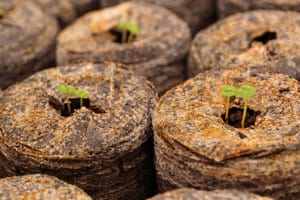 Now that we have some information, where do we start in evaluating why our seed germination failed? When seed germination doesn’t happen, there are a few things to consider.
Now that we have some information, where do we start in evaluating why our seed germination failed? When seed germination doesn’t happen, there are a few things to consider.
Have none of the seeds germinated? If this is the case, there is one of two potential answers. The more likely answer is an environmental condition is preventing the seeds from sprouting. We will look at those below. The second cause is that the seeds are old, leftover from several years ago, forgotten in a box or cupboard or stored in extreme temperatures that have destroyed the seed germination potential. Extremes of heat can kill seeds in a short time, which is why we recommend storing them in a cool, temperature and moisture stable environment.
If only a few of the seeds germinate, it is most likely from being impatient or planting older seeds that have less viability. Most garden seeds have a high germination rate for the first 2 – 3 years, with the exception of hulless pumpkins, leeks and onions. Once the germination drops to about 75%, their ability to sprout will drop considerably faster. Of course, when you see the first few pepper seeds pop up in 3 – 4 days, then nothing for another day or so and you give up, you lose out on the rest of the seeds emerging at the end of the week! Have a bit of patience, observe the seeds progress each day and check our Germination Guide or the back of the seed packet to see how long they really should take. Many times a couple more days makes all the difference in germination rates.
Other conditions such as improper soil temperature and moisture, or a combination of the two, are the majority of the reasons that seeds don’t germinate in a timely manner. Planting too early, too deep, watering too much or too little are common mistakes made. Other factors include soil preparation, birds and/or rodents stealing the seeds.
If you are in doubt as to the viability of seeds, whether they are an unknown seed that was given or traded to you, or you’ve “discovered” them in a closet or back shelf, do a paper towel seed germination test.
Wet a paper towel and wring most of the moisture out of it. Fold it in half and then lay it open. Arrange the test seeds – usually 10 or so – along the fold, then re-fold the towel over the seeds. Roll the folded towel into a tube, then seal it into a zip-lock type of clear plastic bag. Put the bag of seeds in a constant, very warm temperature location – such as the top of a refrigerator, freezer or in the oven that has a pilot light. You need about 85 – 90°F. Record the date started and check the progress daily, opening the bag to check the moisture level. You should see water droplets on the inside of the bag, add a little more water when you don’t. Check the germination rate and amount of days needed against our Germination Guide. If the seeds germinate well, you can plant them directly by cutting them out of the paper towel, and then you know they are viable.
 Let’s look at the major factors that a seed needs for germination. They are moisture, temperature, air, light and soil. For a more in-depth look at these factors, read our article “Starting Seeds at Home: A Deeper Look.”
Let’s look at the major factors that a seed needs for germination. They are moisture, temperature, air, light and soil. For a more in-depth look at these factors, read our article “Starting Seeds at Home: A Deeper Look.”
Moisture – A dormant seed only contains about 10 – 15% moisture, so it must draw water from the soil that surrounds it. As the moisture is absorbed from the soil or seed starting media through the seed coat, enzymes are activated that convert the stored nutrition reserves and softens the seed shell, allowing oxygen to penetrate the seed coat, starting the process of growing. The moisture levels are critical at this early stage – they must remain constant for the sprouting process to continue and for the seedling to survive.
Uneven moisture levels can seriously delay sprouting of a seed, and even a few minutes lack of moisture as a seedling can kill it, as it has no method of storing water like a mature plant does. During the germination process, a seed needs much more moisture in the soil than when it has sprouted, so be aware and decrease the moisture levels as young seedlings emerge and mature.
Temperature – Germination will only occur in a specific range of maximum and minimum temperatures for each variety. Our Germination Guide lists these, along with the optimum temperature each one needs. The temperature we are talking about is the soil temperature, not the air temperature above the seed tray or garden row. Slightly cooler temperatures can double or triple the time needed for germination – even as little as 5°F cooler can be the difference between a 7 day or a 14 day seedling emergence!
When starting seeds inside, a bottom heat such as a seed sprouting heating mat on a thermostat is invaluable. In the garden, double check the soil temperature with a soil thermometer before spending the time and effort in carefully planting your seeds and being disappointed later.
Air – Seed germination requires large amounts of oxygen to activate the metabolic process of converting the stored nutrients into energy. Oxygen that is dissolved in water and from the air contained in the soil is used. If soil conditions are too wet, an anaerobic condition can be created and seeds may not be able to germinate due to lack of oxygen.
Light – Some seeds need light for germination, while some other seed varieties are hindered by light. Most wild species of flowers and herbs need darkness for germination and should be planted slightly deeper in the soil while most modern vegetable crops prefer light or are not affected by it, and are planted shallowly to allow small amounts of light to filter through the soil.
Soil – It is the medium for successful seed germination. In the germination tray, it may be absorbent paper (blotting paper, towel or tissue paper), soil, sand or a mixed media made specifically for seed germination. The substratum absorbs water and supplies it to the germinating seeds. It should be free from toxic substances and should not act as a medium for the growth of micro-organisms. It needs to be loose, allowing the moisture to easily reach the seed and for the seed to move as it grows without spending lots of energy in moving the soil to reach the surface.
A few things to consider –
1. Keep seed packets in a cool dry place. Do not store in your garage, potting shed or near a heat source such as a heater or appliance.
2. Review the seed packets individual instructions and develop a planting schedule based on your local weather and growing season.
3. Re-seal any seed packets that you are starting indoors, such as pepper, eggplant, and tomatoes. This will allow you to start more seeds later if you want to stagger your plantings, etc.
4. It may be better to over plant and then share plant starts with neighbor and friends, than to under plant and be caught short.
5. Download the Terroir Seeds Garden Journal to get a jump start on tracking your garden this year.
Questions to Answer
And finally, a few questions to answer to help us help you in determining what went wrong and how to correct it:
Did you follow the germination instructions on the seed packet? Go back and read them again; we sometime spend hours in researching and experimenting to find the best methods, temperatures, etc.
What was the soil temperature? Not the air temperature, but the soil temperature? Were there fluctuations? If so, how much? Not knowing this is a critical error that is a major cause of seed germination failure.
How moist/damp was the soil? For seed starting, the soil needs to be damp to the touch. You should be able to see a small pad of moisture on your fingertip after you lightly touch the soil. It shouldn’t be a drop of water, but an easily observed spot of dampness. Was it too dry/too wet? Did it get dry during the day/night, or was there constant moisture?
What seed starting mix are you using – a complete soil, Miracle-Gro mix. sterile seed starting mix, home-grown or something else?
Are the seeds still physically in the ground? If you don’t know, dig a few up to check. Are birds, squirrels, rodents eating/stealing the seeds or seedlings? Many times we have heard that our seeds aren’t germinating, when they have been eaten! You may need to use a paper cup with the bottom cut off to protect the seedling from birds/rodents until it is more mature.
Once you have answered these questions, we can help you determine what has prevented your seeds from germinating. More often than not you will know what to change just from reading this.
Discover the secret to successful seed planting. Learn how the orientation of seeds can significantly impact their germination and growth.
Starting seeds at home is easy and gives more choice than the local garden center. We take a deeper look at germination and the needs of the seeds.
Seed starting media is what is used to, you guessed it, start your seeds in! Why does starting seeds require its own media? Why not just use some good garden soil or well-aged compost? What is the difference anyway? These are valid questions that all too often go unanswered, leading to disappointment, frustration and failure for the home gardener trying to get a jump on the season by starting their own seeds for transplants.
The first thing to recognize is that starting seeds inside and growing them into transplants is much different than what happens in the garden with direct seeding. Growing inside has advantages and challenges that simply do not exist in the garden, with its own rules. Temperature can be controlled and modified inside, as well as lighting to ensure success. Humidity and soil moisture levels are other things that can and need to be controlled to get the young seedling to the strapping transplant stage. A good seed starting mix provides a sterile environment free of fungus, mold or viruses, good drainage to allow better soil moisture management, and minimizes nutrient leaching from the young root systems. These are all things that are just not possible to control outside, forcing the gardener to wait until conditions are right before sowing the seeds directly into the soil and hoping that the weather cooperates. Thus the entire reason to start your own seeds inside, in a nutshell! You have control- control of the choice of what to plant, what varieties of tomatoes, peppers and such that are not available at the local garden center or nursery, and control of all of the variables that will grow a healthy, sturdy and productive member of the garden.
It all starts with the choice of the right seed starting media or mix. Get it right and you are well on your way to success. Get it wrong and you could have some challenges that slow you down. Luckily, it is not difficult at all! When you visit your local garden center, home improvement store or local market, it might be confusing on which growing media to buy. For the beginning gardener, buying seed starting media is the best and safest choice for success. This is not the time to overthink or overcomplicate things. Find the simplest, most successful way possible and stick with that method. You will have plenty of time to experiment with different approaches and systems once the seedlings are transplanted into your garden. What you need for starting seeds is a dead-simple, easily repeatable, always successful method to get the seeds up and healthy. As you gain experience and knowledge you can do some experimenting to see what “recipes” or hand-made mixes work well for you. Below we will tell you more about each type.
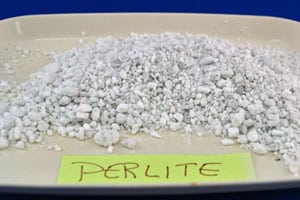
Perlite
Perlite– An amorphous volcanic glass expanded to about 13 times its original volume by heating to 1,800F; it is used as a soil additive to help prevent water loss and soil compaction and is white in color. Perlite provides aeration and optimum moisture retention for superior seedling growth. It is sterile and has a pH of approximately 7, or neutral. Used to condition garden soil to improve aeration and drainage.

Vermiculite
Vermiculite– A mica mineral expanded by heating it to 1,400F; used as part of peat-lite mixes. Similar to perlite it is lightweight, highly absorbent, increases aeration and moisture retention, and minimizes fertilizer leaching.
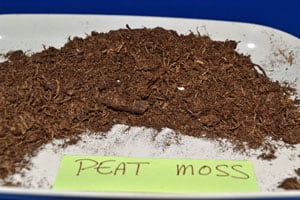
Peat Moss
Peat moss– Organic material used in many soil mixes to grow plants in. It comes from Peat bogs, which are natural deposits of peat moss. Peat Bogs are found in very Northern Countries such as Canada. This is a finite resource.
Peat pots– Pots made from compressed peat moss and paper.

Rock Wool
Rock Wool– A growing media is an inorganic product that is made by melting together at a very high temperature a mixture of basalt, coke and limestone into lava which is blown into a large spinning chamber which pulls the lava into fibers like “cotton candy”. Rock wool fibers hold a lot of water; this medium is usually used in greenhouse production.
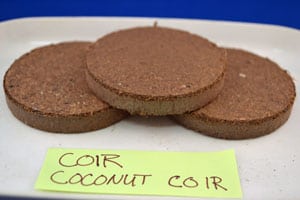
Compressed Coconut Coir
Coir– A natural fiber extracted from the husk of coconut and has a large capacity to absorb water and still provide aeration. It is a strongly recommended substitute for sphagnum (Peat) moss because it is free of bacterial and fungal spores, and produces good results without the environmental damage caused by peat mining.
Wetting agent– Material added to water to reduce the surface tension and make the water wetter.
Many common Seed Starting Potting Mixes will contain peat moss, perlite, a fertilizer and a wetting agent. There are many different brands of Seed Starting Mixes on the market or you can create your own. Take a look at our Seed Starting Department for ideas and tools to help you get the best out of your seed starting efforts.
Here are a couple of hand-made mixes from The New Seed Starters Handbook by Nancy Bubel. Nancy was the author of many books at Rodale and the author of the Storey Publication Grow Super Salad Greens.
Good and Simple Potting Soil
One part finished compost
One part vermiculite
Home-Style Potting Mix
One part finished compost
One part either loose garden soil or potting soil
One part sharp sand, perlite or vermiculite or a mixture of all three.
If you are a beginner it might be easiest to buy a bagged mix or a tray with coir pellets to start with. After a little experience you will find what works best for you.
A personal favorite is using a soil blocker and creating your own custom mix based on Eliot Coleman’s methods. Chapter 14 of The New Organic Grower covers the complete use of soil blocks and blocking mixes. If you start a lot of starts or are a larger grower this method might be worth exploring.
With an understanding of the importance of a good seed starting mix, and the ingredients commonly available, you have the tools needed to have a successful start to your seedlings, a more productive garden and great home grown food. We will be continuing the planning, seed starting and planting series with some seed starting basics, tools and experiences that have helped us have a high success rate.
When it comes to starting their own heirloom seeds, home gardeners seem to be in two distinct camps- those that are really positive about the process and results, and those that aren’t. The folks that aren’t too excited about starting their own seeds usually have a good reason- they’ve had some failures with die-off and had to scramble to buy starts at the local garden center and wound up with something that they didn’t really want. Others haven’t tried their own starts, but feel that it is complicated or difficult. There are some very compelling reasons to start your own seedlings, but there are some challenges to overcome as well. We will look at several items to consider in making the decision of whether or not to do your own starts, along with some tips to get you started successfully.
Why start your own seeds? What advantages/disadvantages are there?
- You have a much greater range of choice on what to grow as you are not limited to what’s available at the local garden center, hardware store or Farmer’s Market.
- Gives a great creative outlet to “cabin fever” that sets in before the garden can be worked, allows you to be “growing something” early on.
- There is greater flexibility on timing to get them started. You can start them to work with your schedule, or to take advantage of getting bigger, earlier producing plants in the garden sooner.
- Starting your own seeds gives earlier veggies from the garden, as you start on your schedule, not depending on a regional greenhouse schedule. For example- here in AZ, most starts come from the central valley of CA, where timing is completely different, sometimes by a factor of several weeks.
- Home gardeners can usually grow bigger, healthier plants than a commercial greenhouse, as there is more attention per plant. Less diseases/issues than from large scale grower.
- Seed starting does require some planning and effort, not as easy as going down and picking out what seedling to buy.
- Does require some set up and equipment, but not much to get started. Will require some space, but not much on start-up.
- Transplants give you a head start on weeds and the weather. A tomato or pepper that is 2 feet tall will have little to no competition from weeds that are just getting started.
Now that you know the pro’s and con’s of starting your own seeds, how does one go about actually doing it? As with just about anything, there is some planning and preparation involved, but not too much. Remember how we talk about getting started in the garden- start small, start simply, but get started? The same thought process applies here as well. Set yourself up for success, not frustration, headaches and failure. Take the time to do some initial planning and set up and you’ll be off to a great start.
Plan and arrange the seed starting area
- Start simply and easily, you may have most of the items on hand.
- A key factor for successful germination is a warm area to sprout seeds- can be the top of a refrigerator, freezer, window sill in south-facing room. etc. Most of the calls we receive about seeds not germinating is traced to this factor. When the temperature of the soil is optimum- seeds can and will “pop” in 5 days, no matter if they are tomatoes, peppers or eggplant! When the soil temperature is less than 70F, it can take 2 weeks to sprout- there is that much of a difference!
- Supplemental heat may be needed. Soil temperatures need to be above 80F for faster germination. The ideal soil temperature for tomatoes, peppers and eggplant is 85F. Rarely are people comfortable at that temperature! Air temperature may be 5-10F different than soil temperature due to evaporative effects of moist soil. Heating pads, germination heat mats, old electric blankets, etc can work to raise soil temperature to where it needs to be. Monitor soil temperatures to avoid over-heating. A heat mat will work even if the air temperature is 60-65F.
- Supplemental lighting may be needed after seeds sprout and develop true leaves. This can range from specific grow lights to common fluorescent fixtures with grow bulbs. Lights need to be moveable to keep about 2-4 inches above plants. Seedlings need 14-18 hours of light per day.
- Humidity levels need to be high when seeds are sprouting, then less so as they develop and continue to grow. Domed lids on grow trays are great and have adjustable vents to maintain humidity levels. Plastic sheeting, such as painter’s drop cloth, will work just as well. Make sure to inspect the seedlings for mold or fungus growth on top of the soil, which is an indication of too much humidity and too little air circulation. After the seedlings grow their second set of true leaves, humidity is less important. Of course, in areas of high humidity, often nothing else is needed.
Once the area is planned and prepared, the equipment is all that is left and you’re ready to start some seedlings! The equipment can be very basic of pretty involved, but again- start small and simple. It is amazing how well seeds sprout in a soil block that is free or paper pot that is next to free! Sometimes they sprout better than in much more expensive and complex equipment.
Gather the equipment needed
See our Seed Starting Department for books and tools to help you be more successful in starting your seeds.
- Plastic trays for seedling sets and containers for individual seedlings. Domed lids or plastic sheeting may be needed in low humidity areas.
- Seed cups or containers. These can range from peat pots to homemade paper pots to handmade soil blocks to recycled yogurt/dixie cups. What is needed is something that will support the individual seedlings and feed them until they are ready for transplanting.
- Soil or seed starting mix. These range from several readily available commercial ready to use seed starting mixes that have no soil and are sterile to lessen the chance of fungus and diseases, to a number of ingredients that make for a great homemade seed starting mix. We will cover some of these in more depth in another article.
- Misters or sprayers. A small squirt bottle sprayer or mister works great to apply very small amounts of water to the seedlings. A small hand pump sprayer can be valuable as well to give a bit more water without having to pump constantly, especially for larger amounts of seed trays.
- Soil thermometer. This gives you an accurate indication of what the soil temperature is, regardless of the air temperature.
Introduction to Seed Starting video with Terroir Seeds
We have created a short video showing how we have started seeds for several years now. This is the result of many experiments and really works well for us. By no means is this is the only way to do it, as we know of several different but equally effective ways to get seedlings started at home. This is just what works for us, and the expense didn’t break the bank. We constructed this in stages after experience and experiments taught us what works in our situation. This takes up little space and produces a lot of seedlings for our trial garden. Take a look and please let us know your thoughts, ideas and experiences that we can share with everyone else!
The snows have melted off, but the clouds are gathering for more rain or possibly snow showers on Monday. We have gotten some prep work done in the garden, and are ready to broadfork the raised beds, apply the Azomite and lay in some compost. First, though, we will need a less windy day.
After the first week, we have some seedlings up! Here are a partial listing of what is up-
Goldman’s Italian-American tomato
Silvery Fir Tree tomato
There are a few more that we are trialing this year, so we can’t say quite yet what they are. After we get some good indication, we will let you in on what might be a new offering in the next year or so!
This video is from March 6,2011.
Enjoy!
Let us know if you have questions, or want something covered in more detail.
This year, we will show you how our garden grows!
Through a series of videos, you can watch how we start seeds, what equipment and techniques we use, and see the growth of our trial garden. We will share our successes as well as the challenges and failures. At this point, we are planning to update this post once a week, so check back often to see the latest. We will post updates on FaceBook as well as our eNewsletter.
The first video is from February 27, 2011.
Enjoy!
Please ask us your questions, or if you want details on something that we cover, please ask about it!

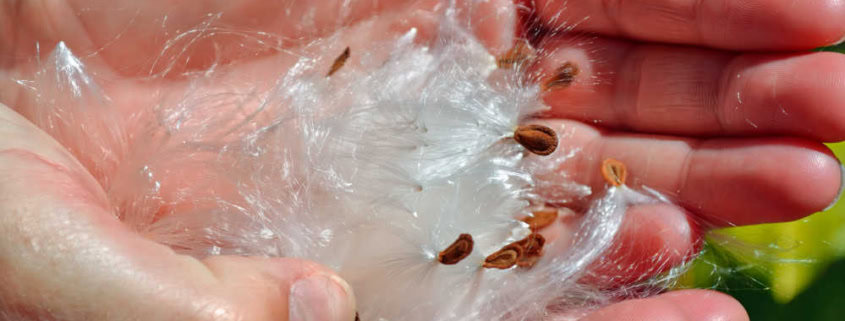
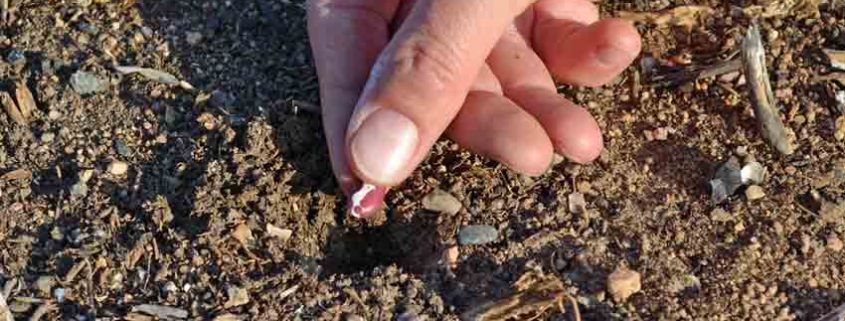
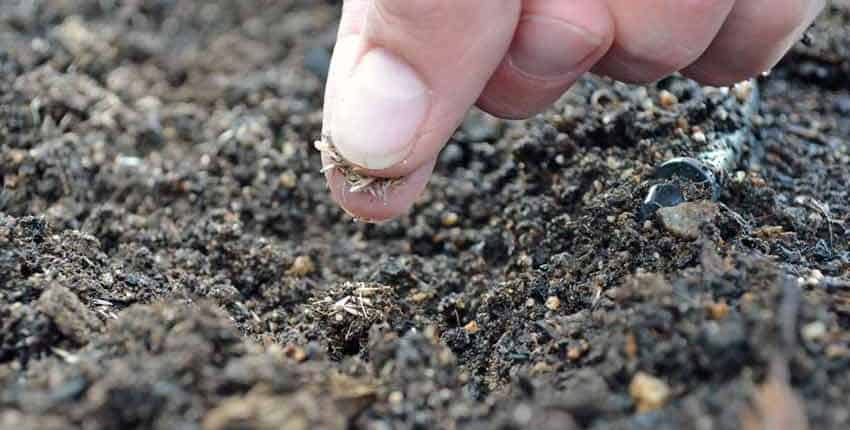


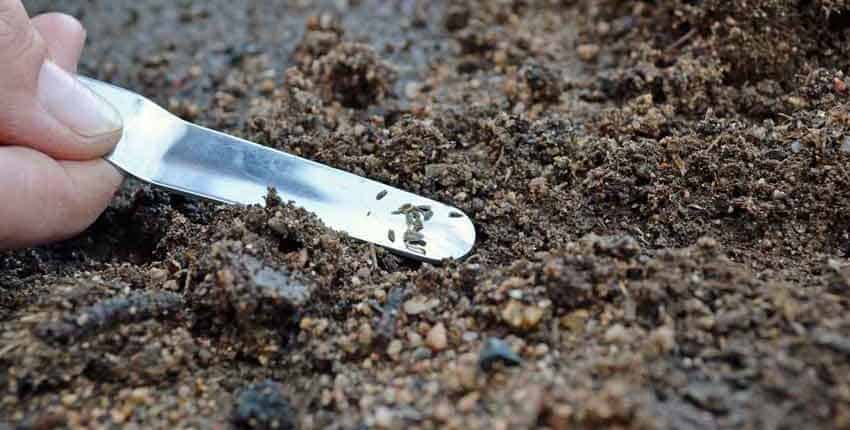


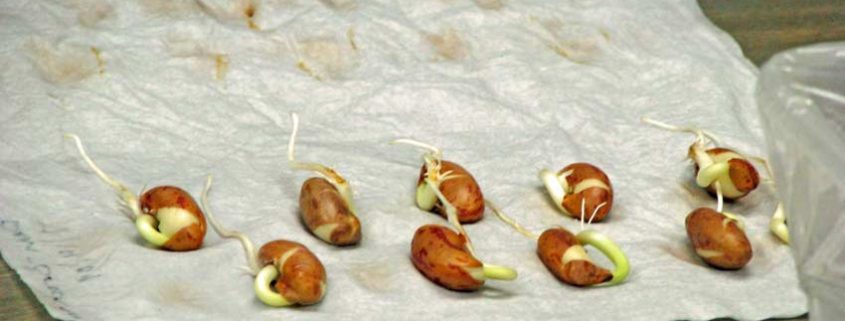
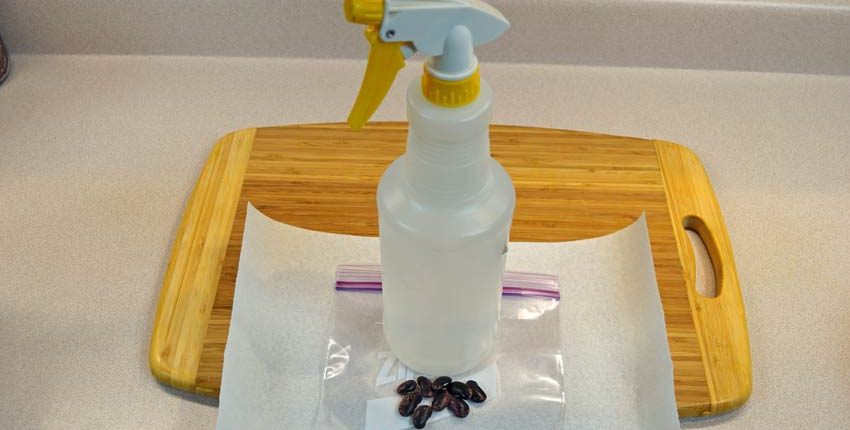


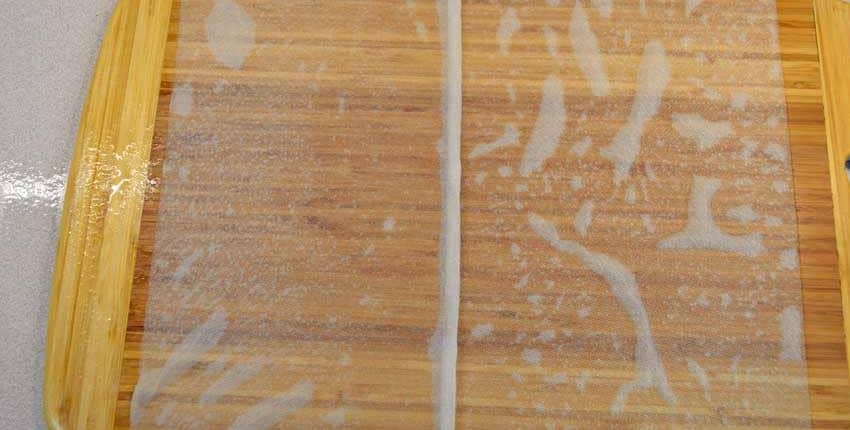
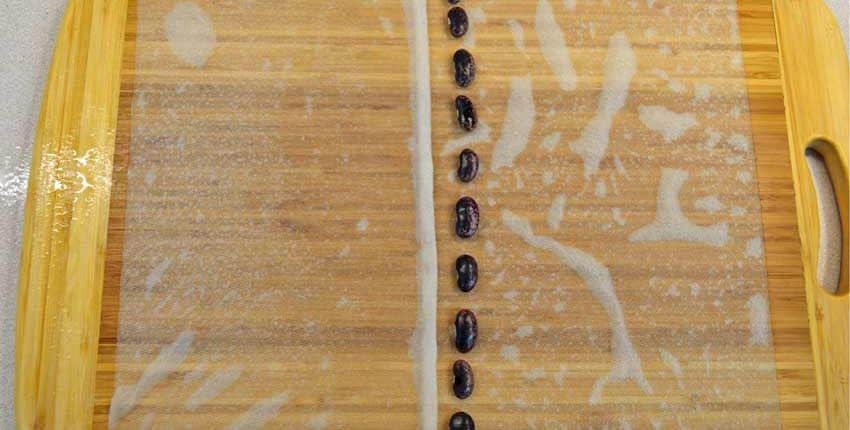

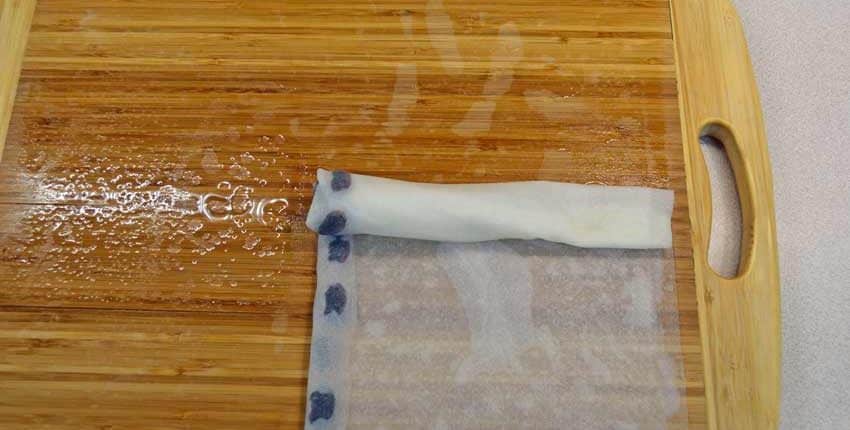
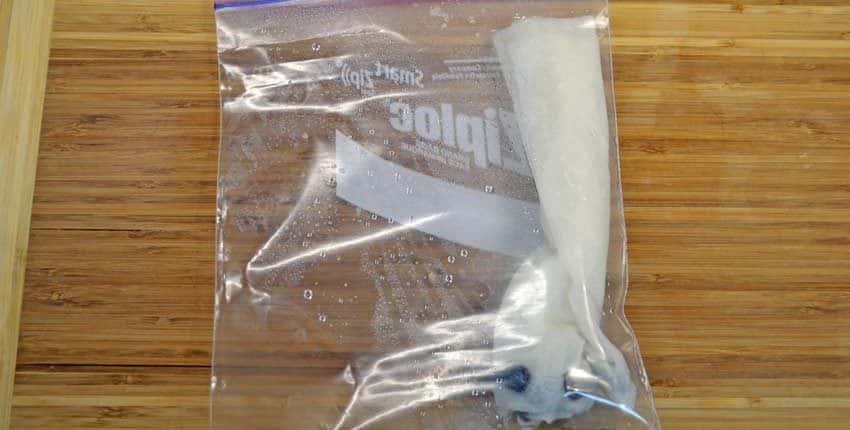
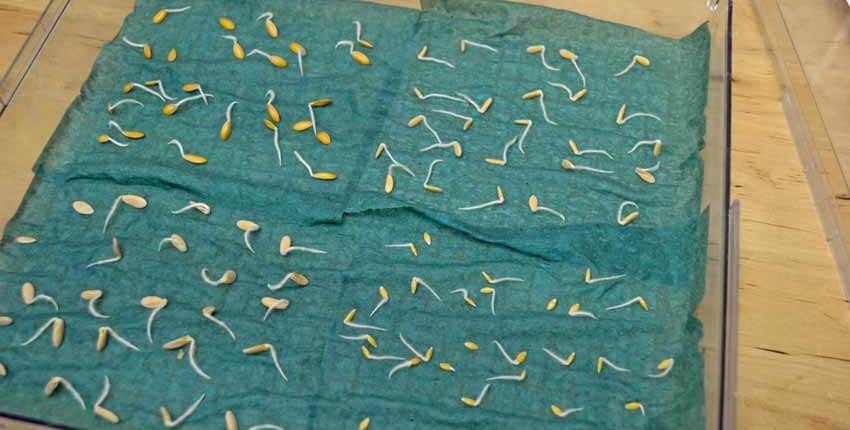




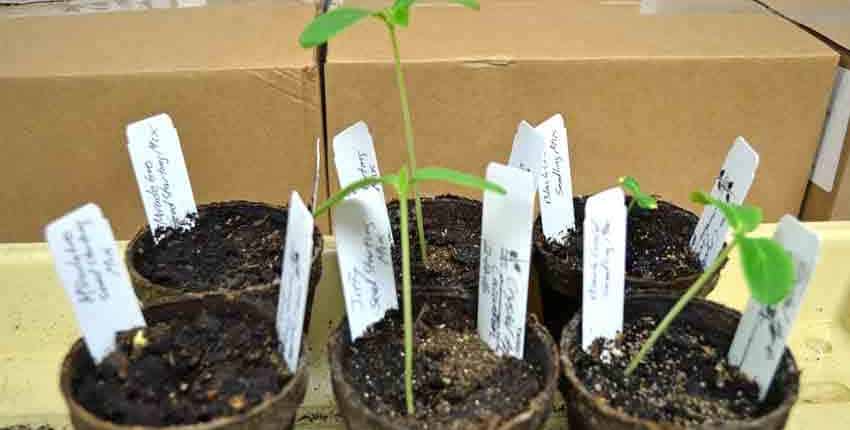
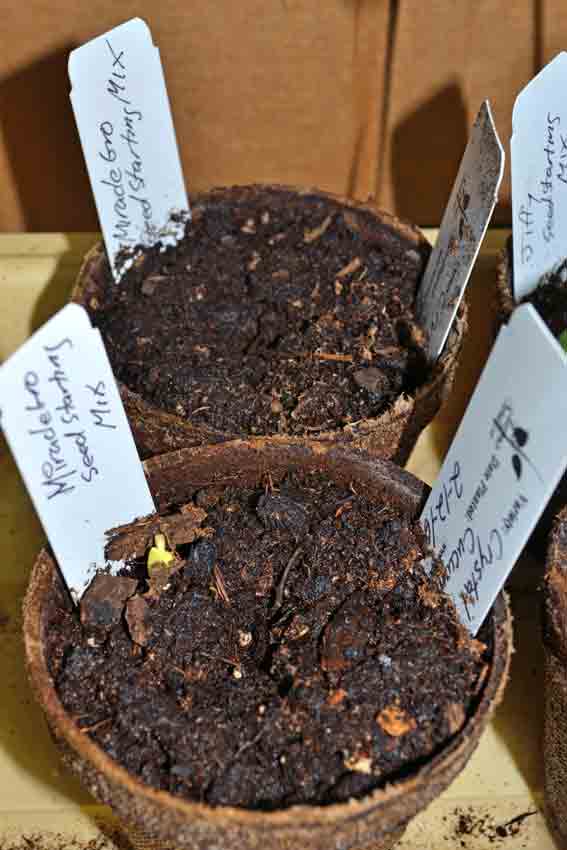
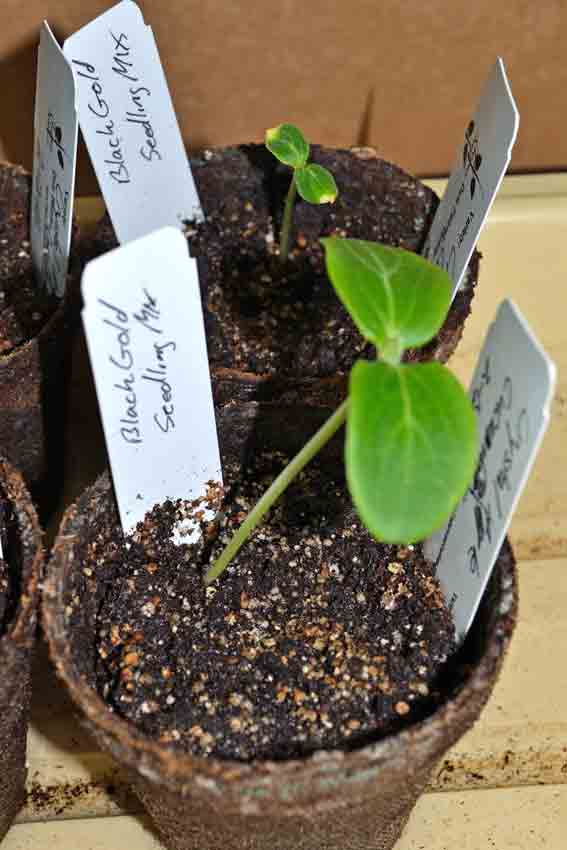
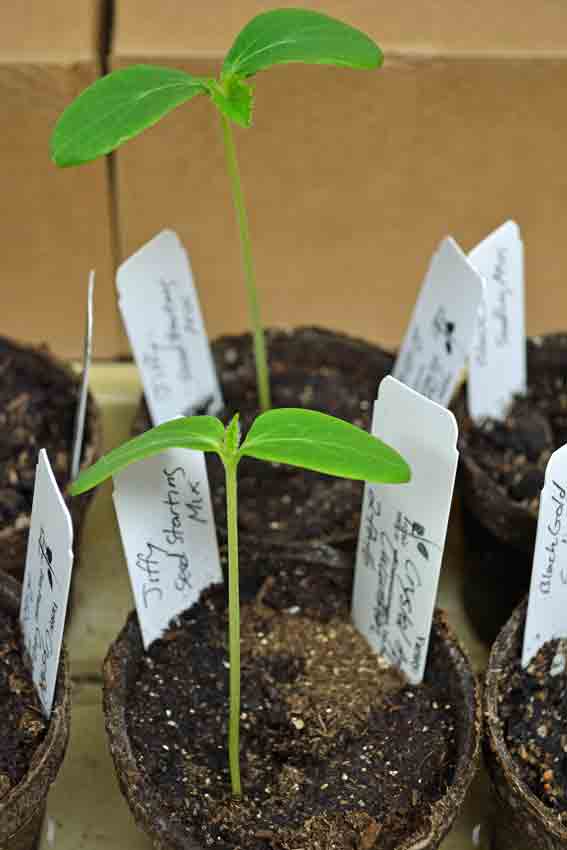

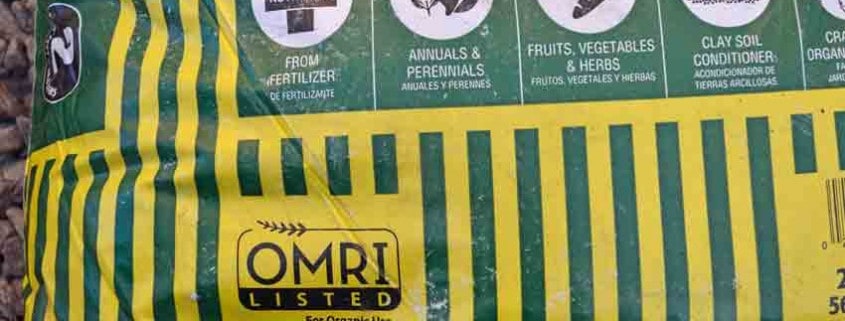

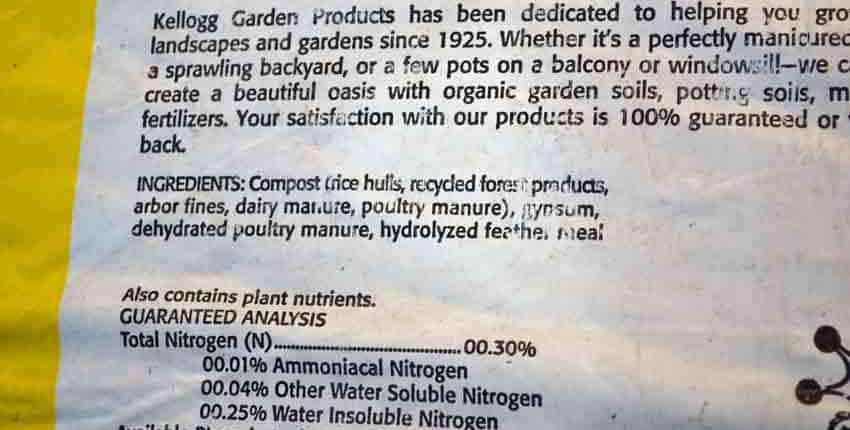
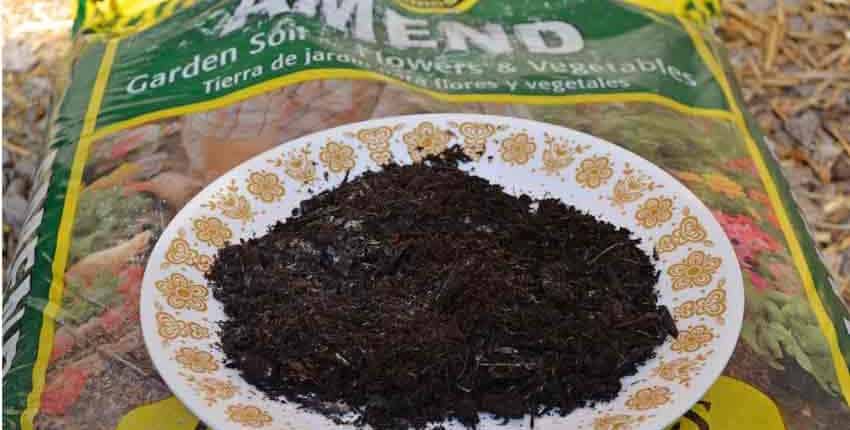

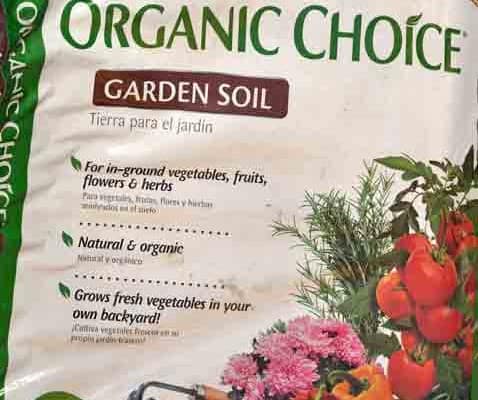
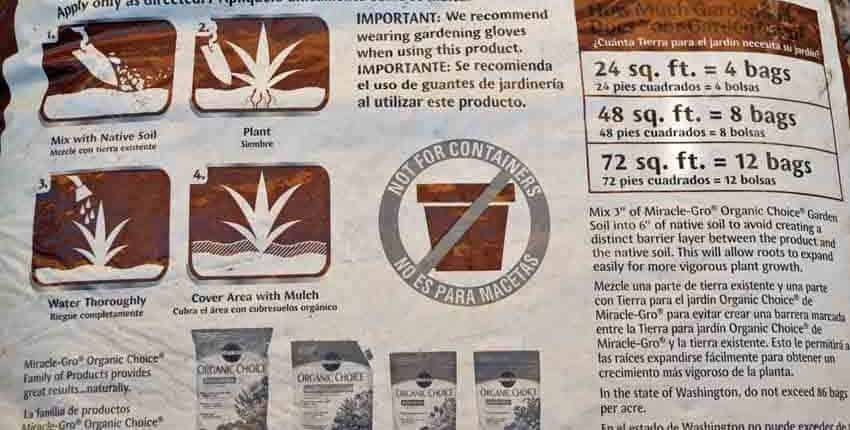


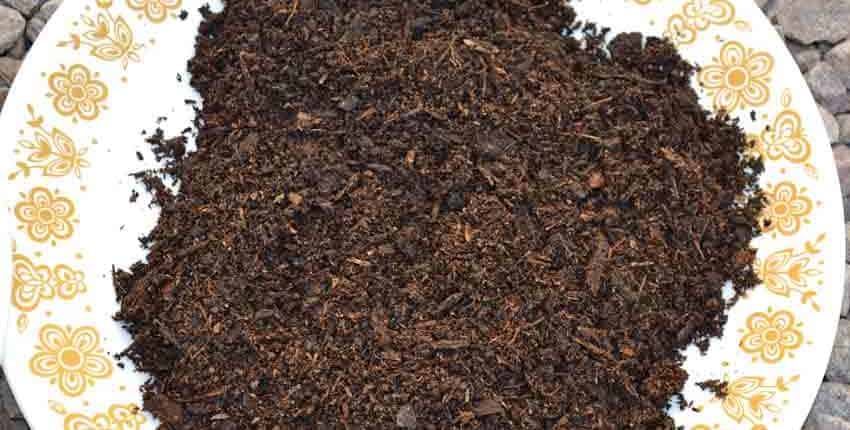

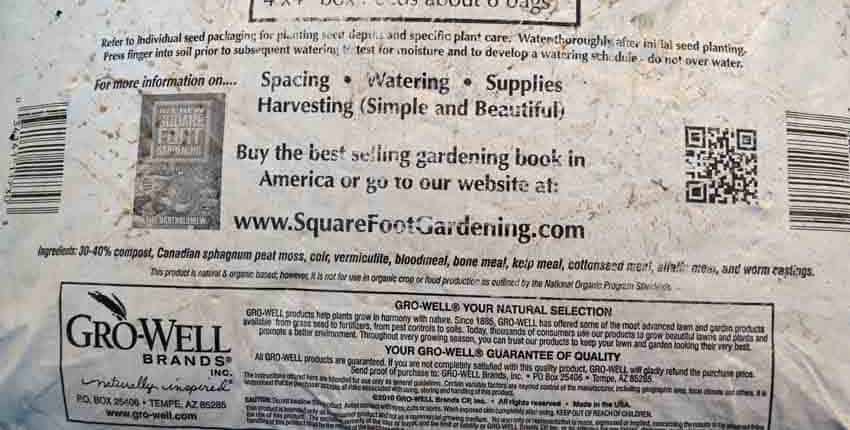
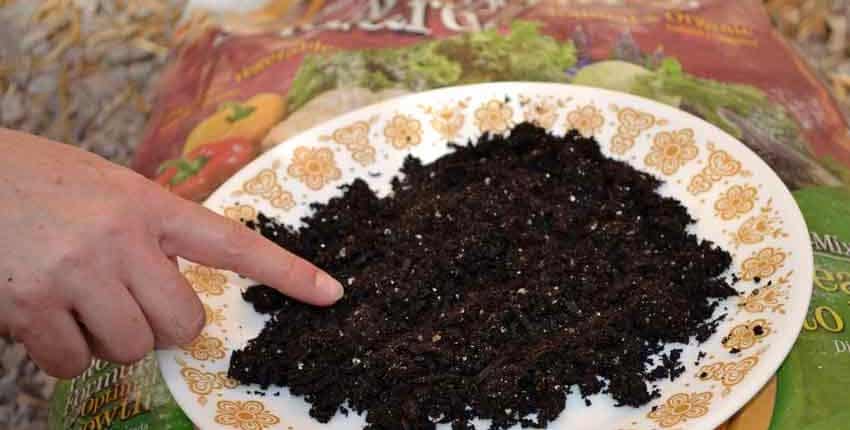

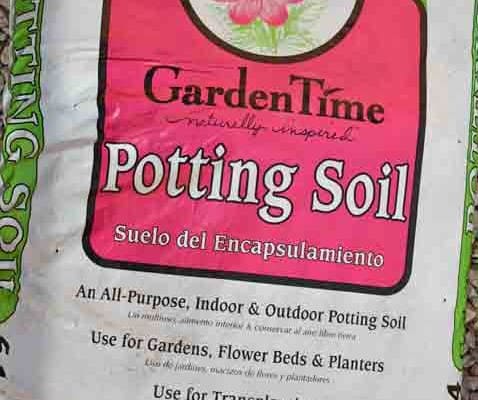
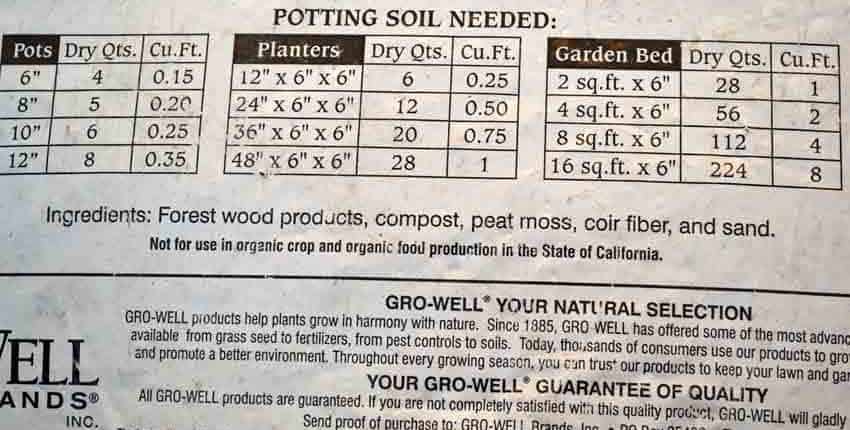
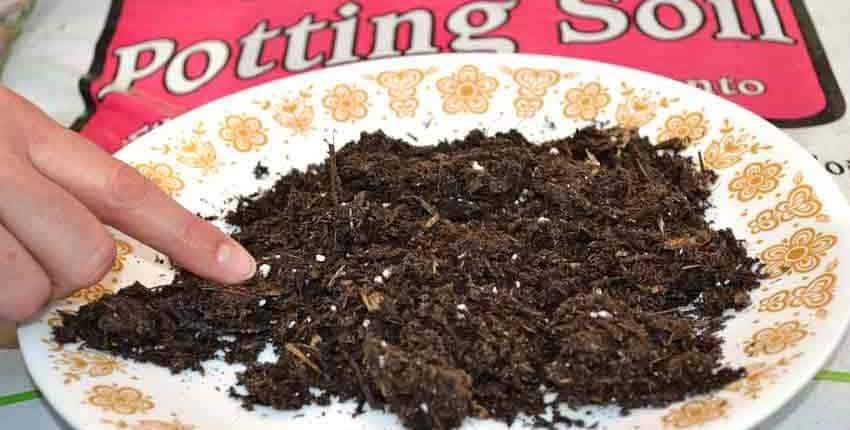
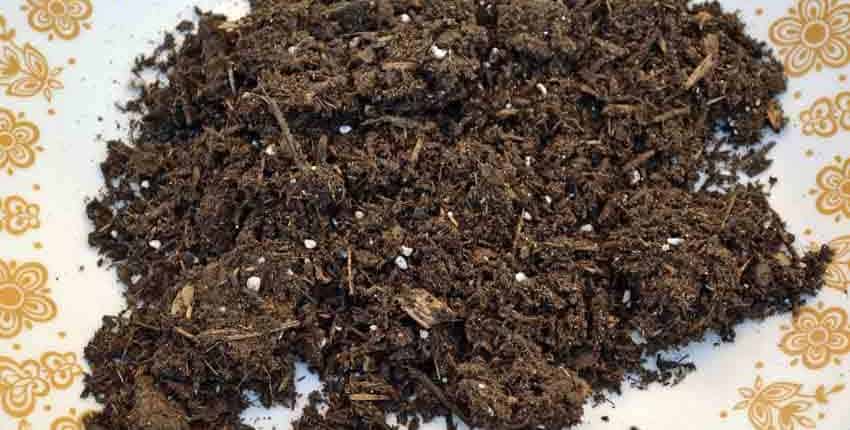

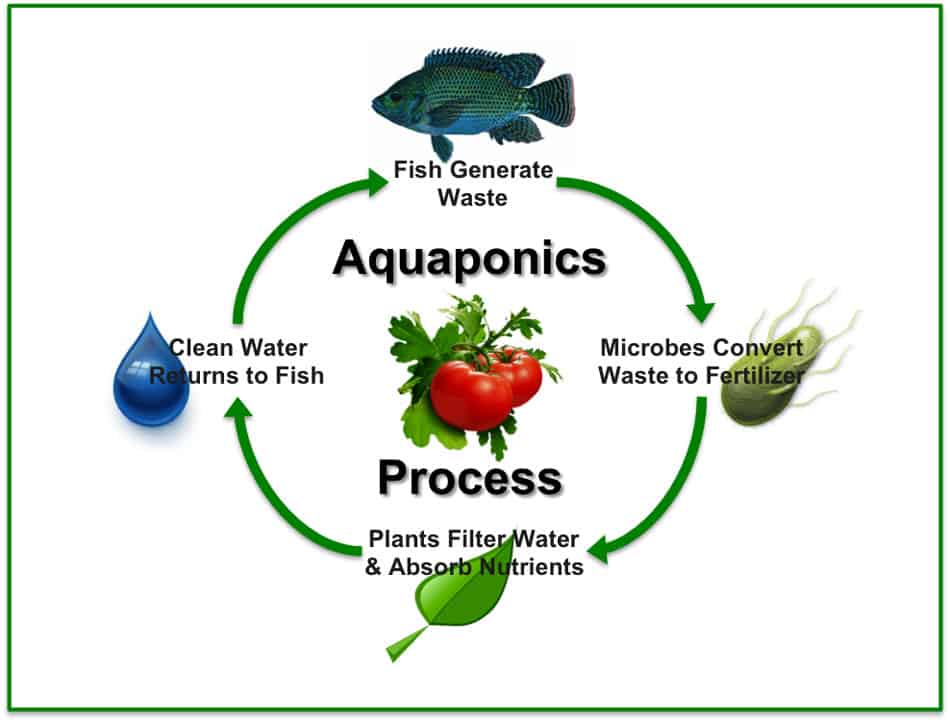
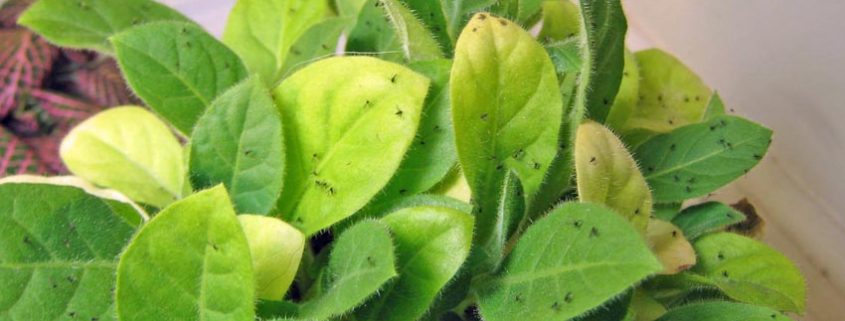
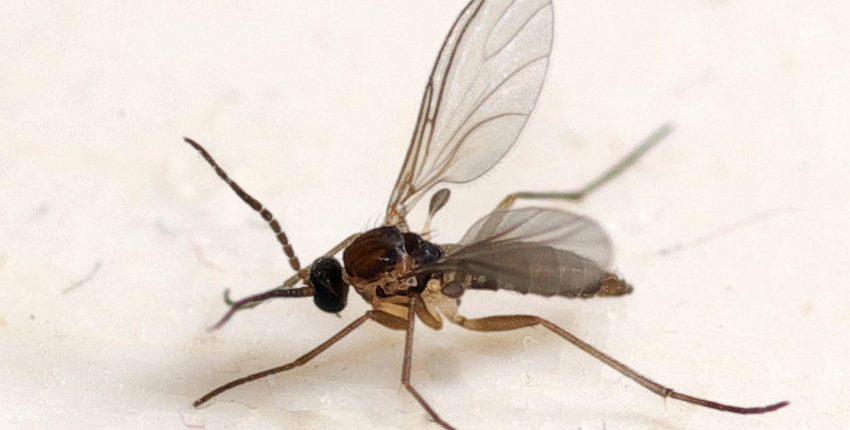
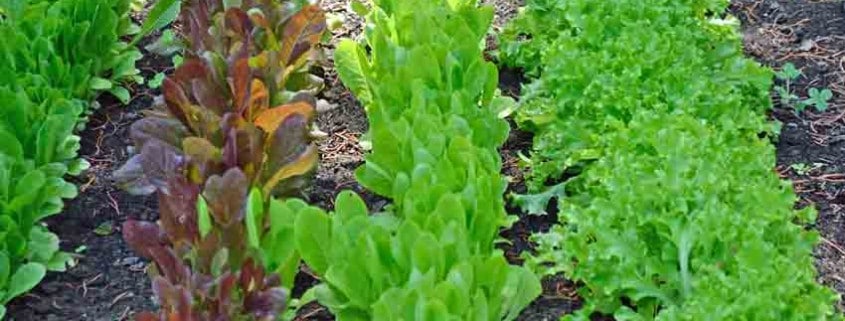
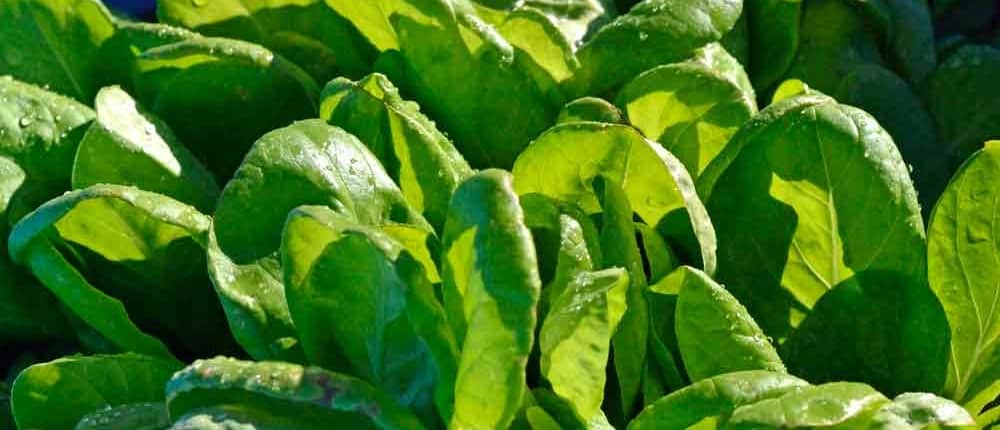
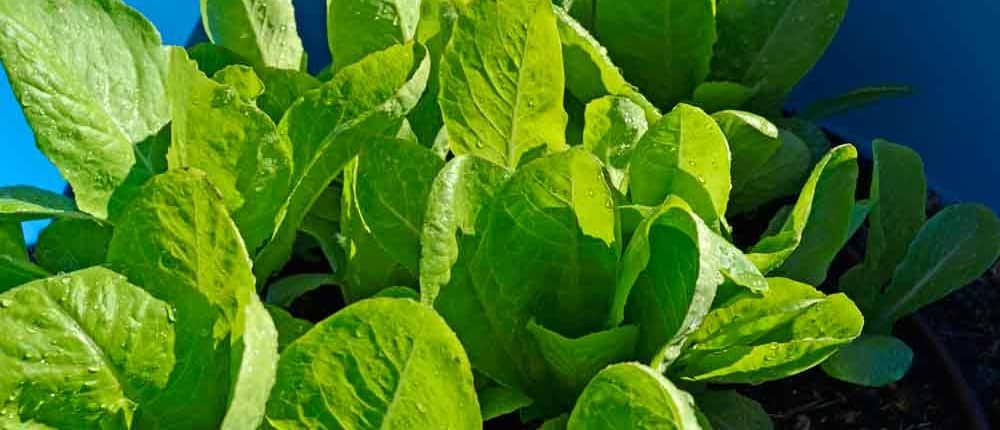
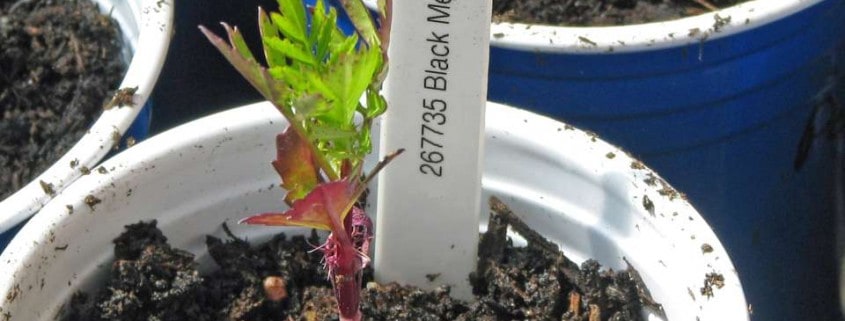
 © 2024 Terroir Seeds | Underwood Gardens
© 2024 Terroir Seeds | Underwood Gardens